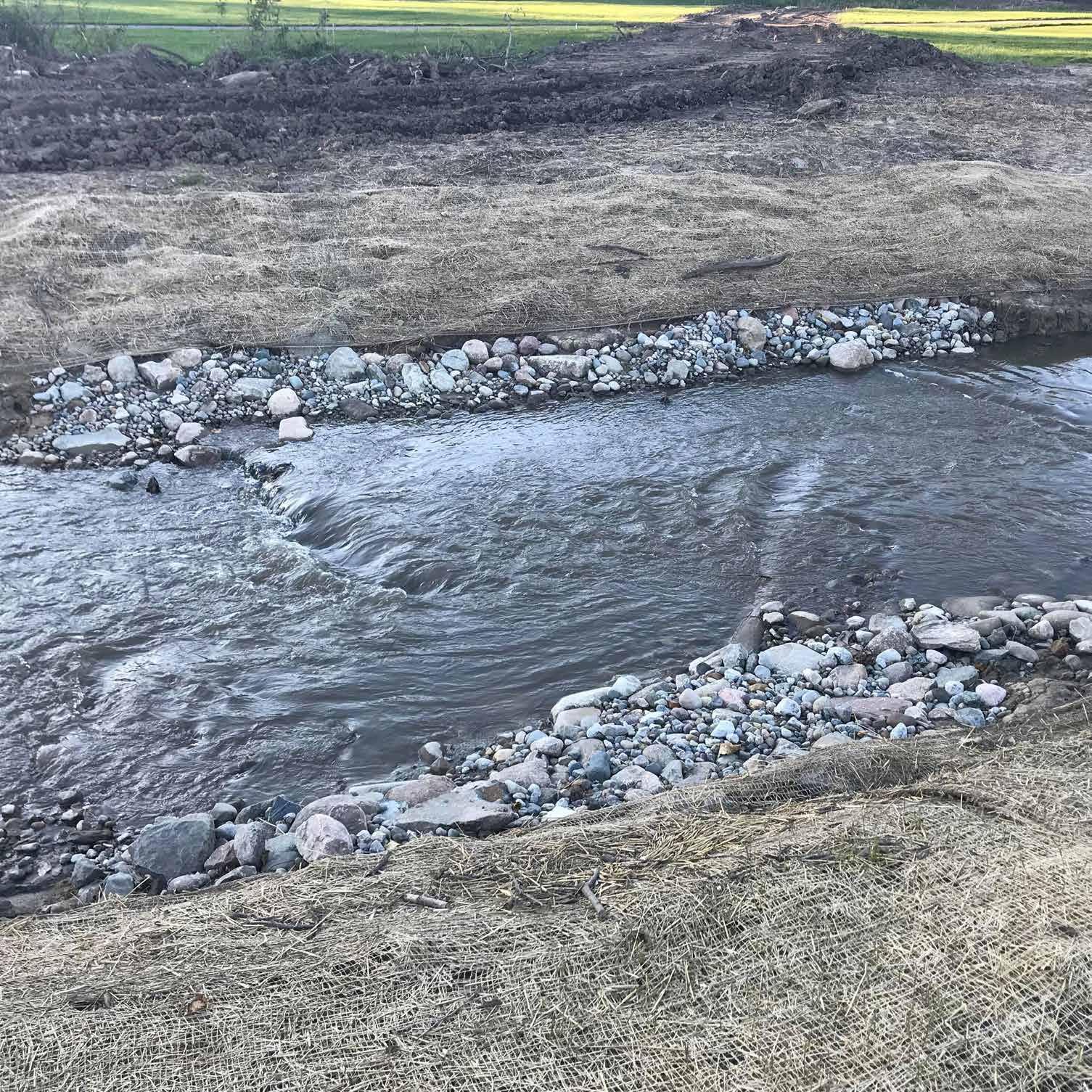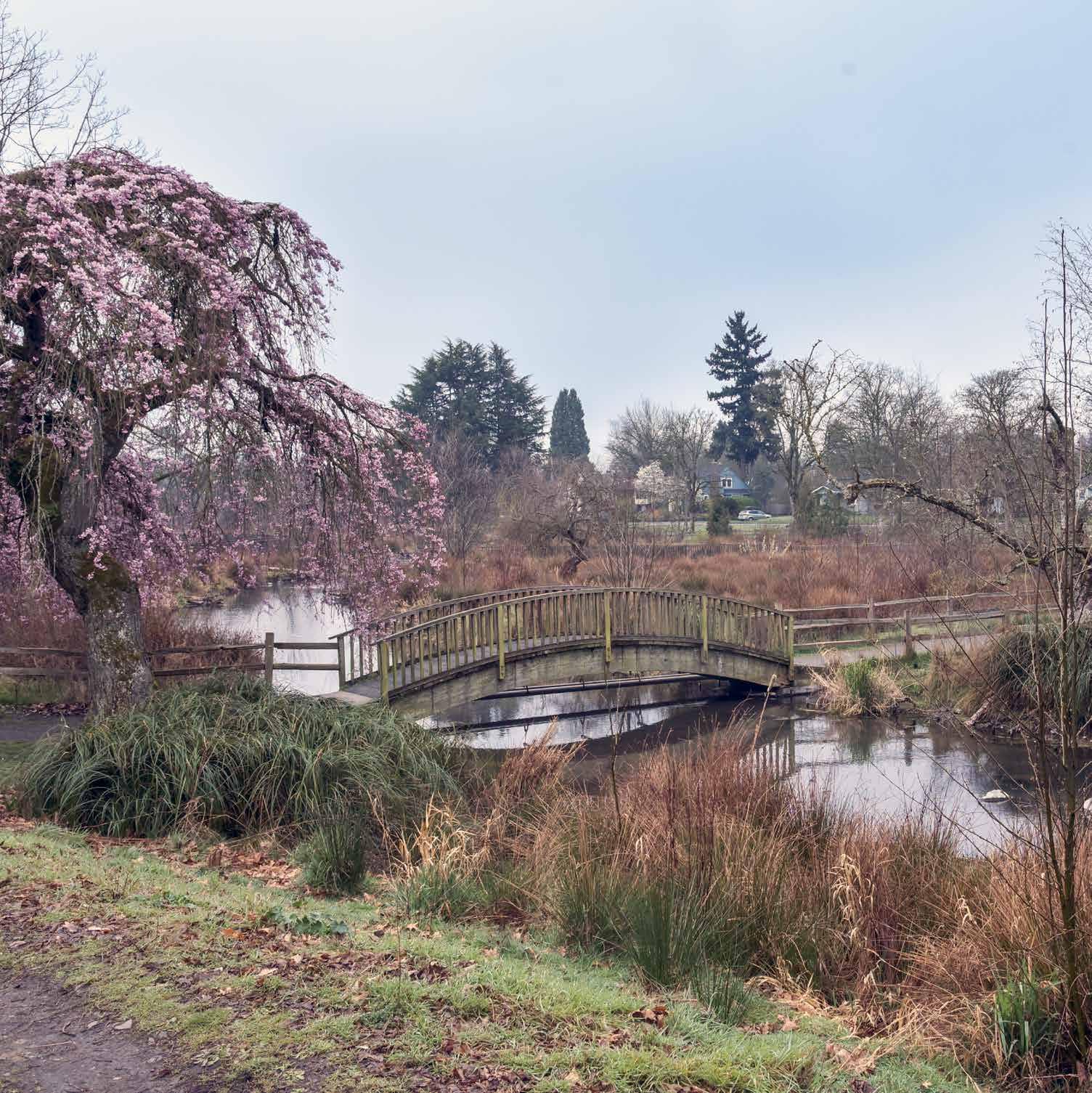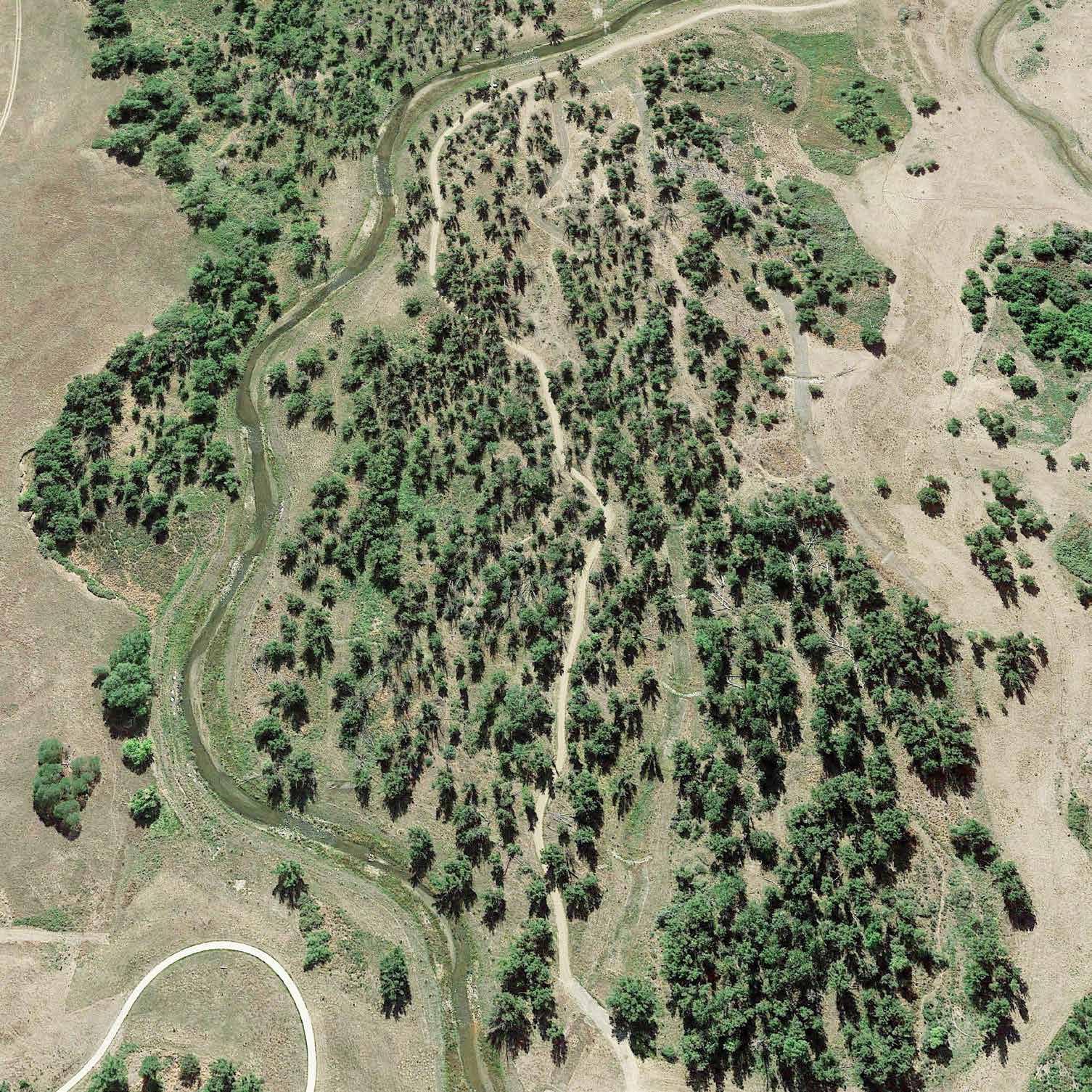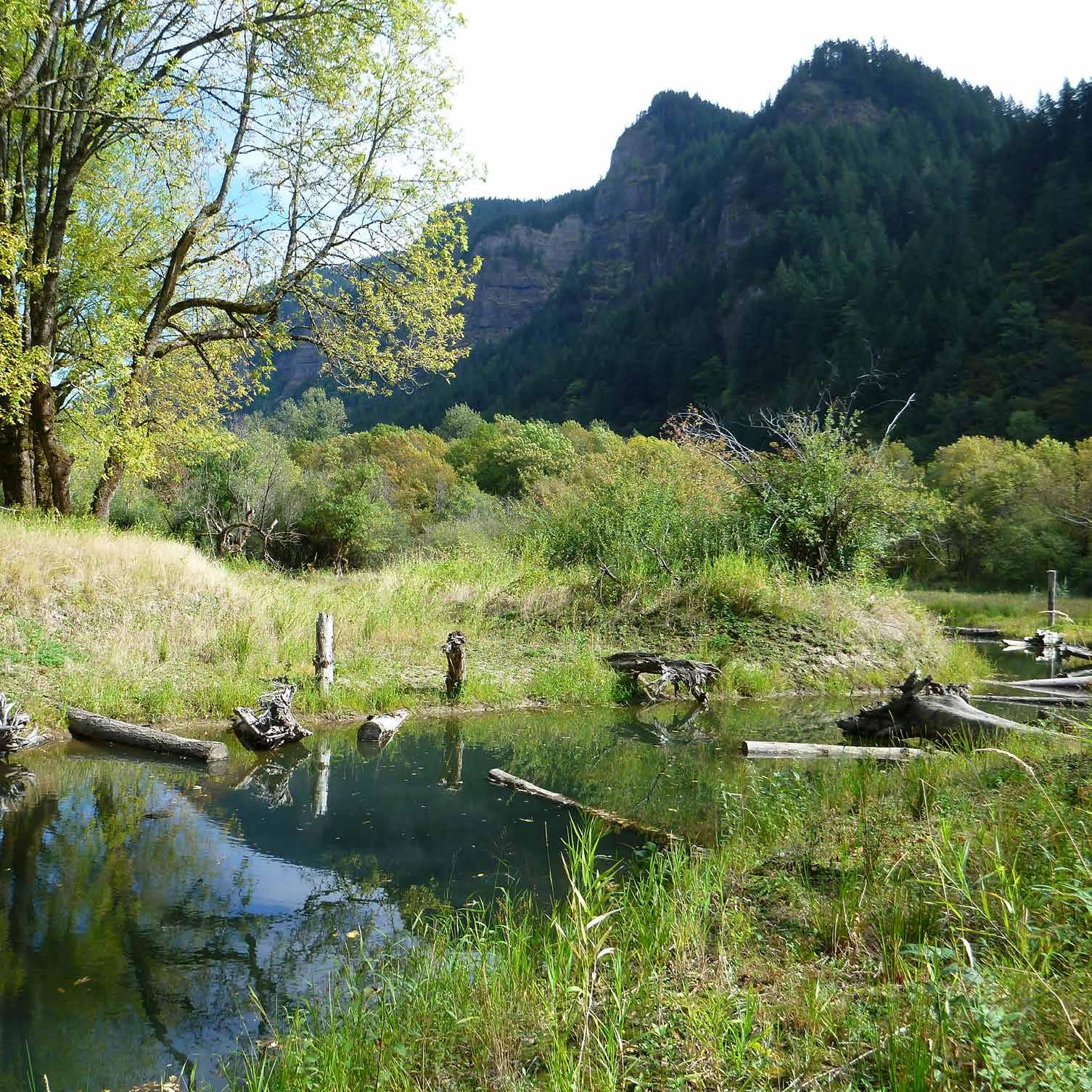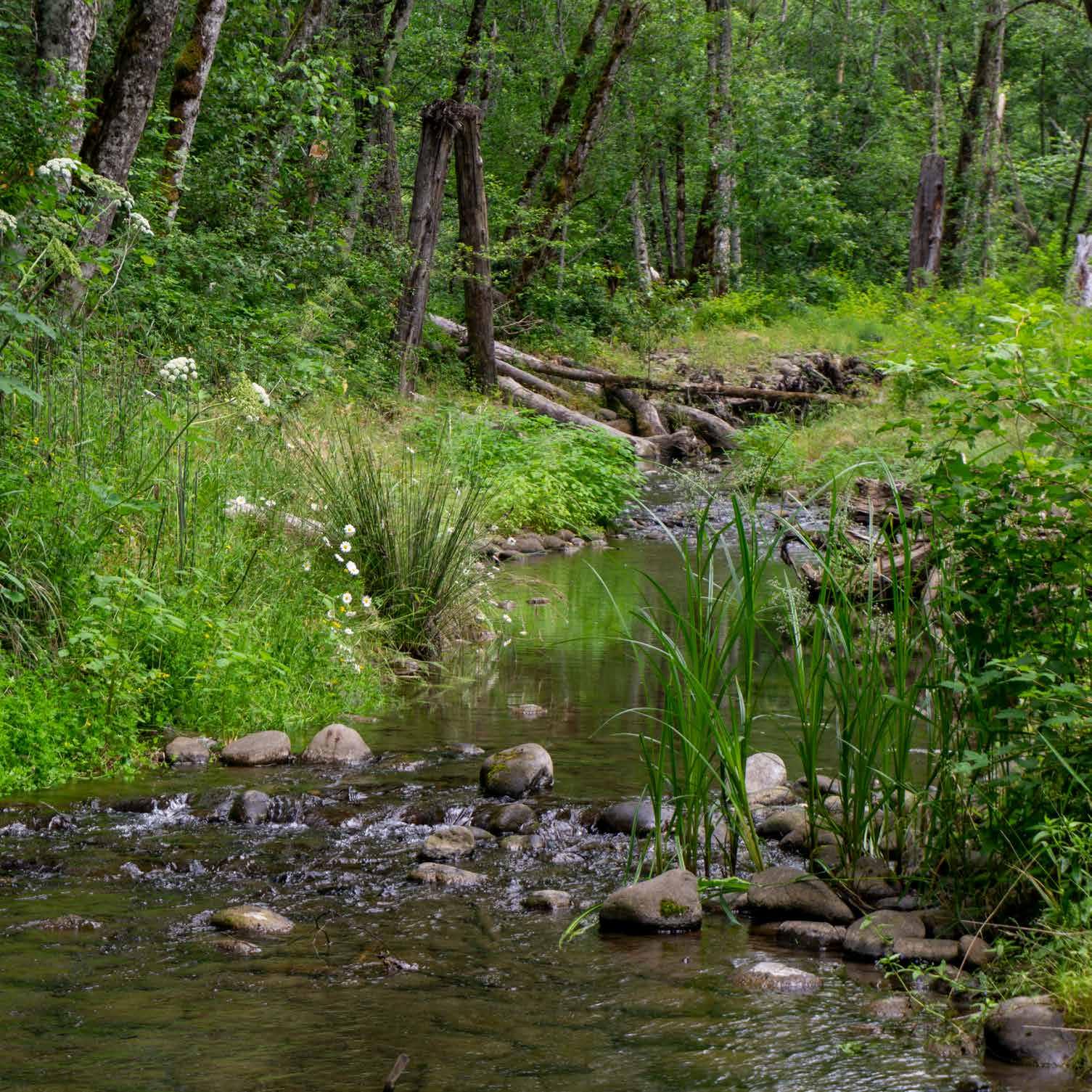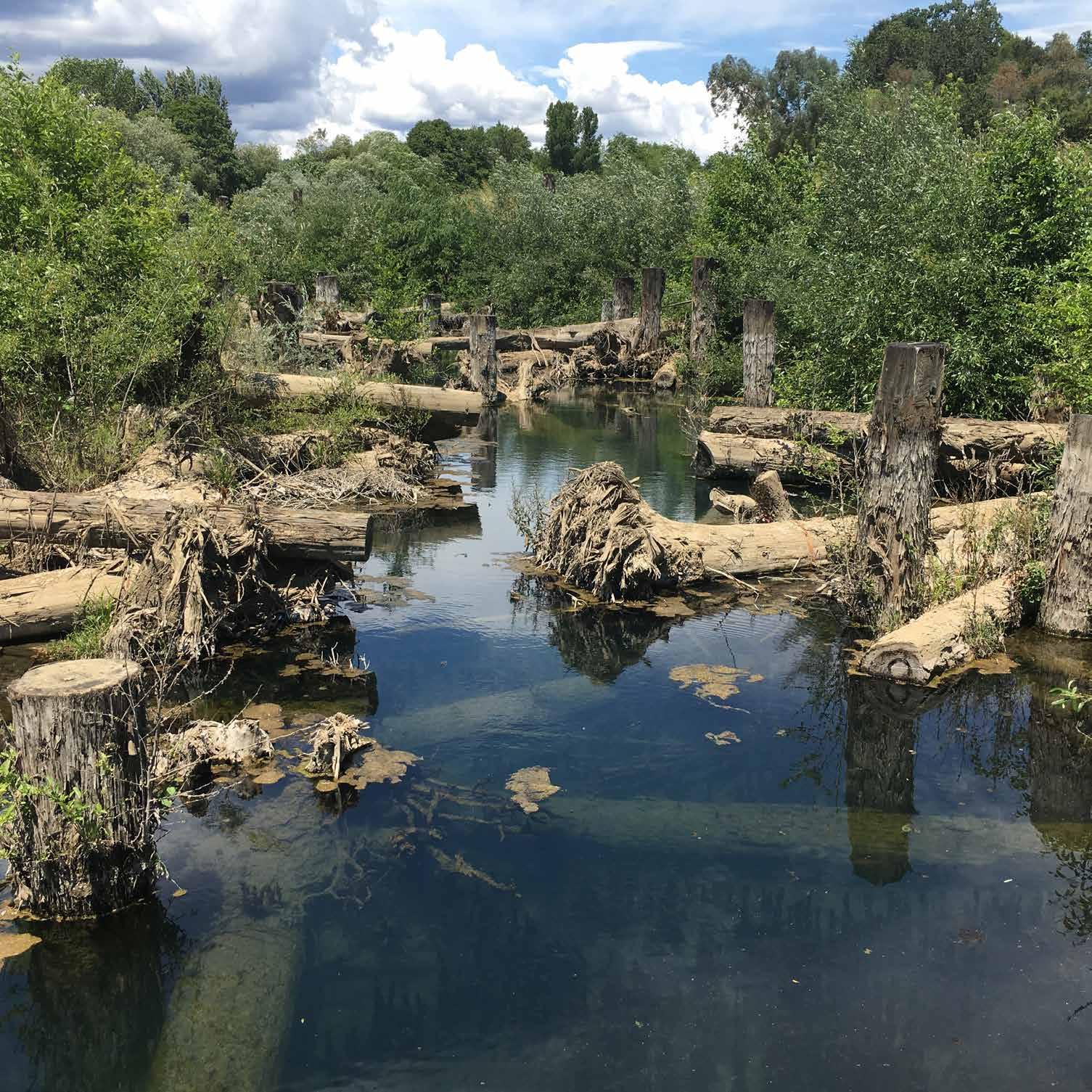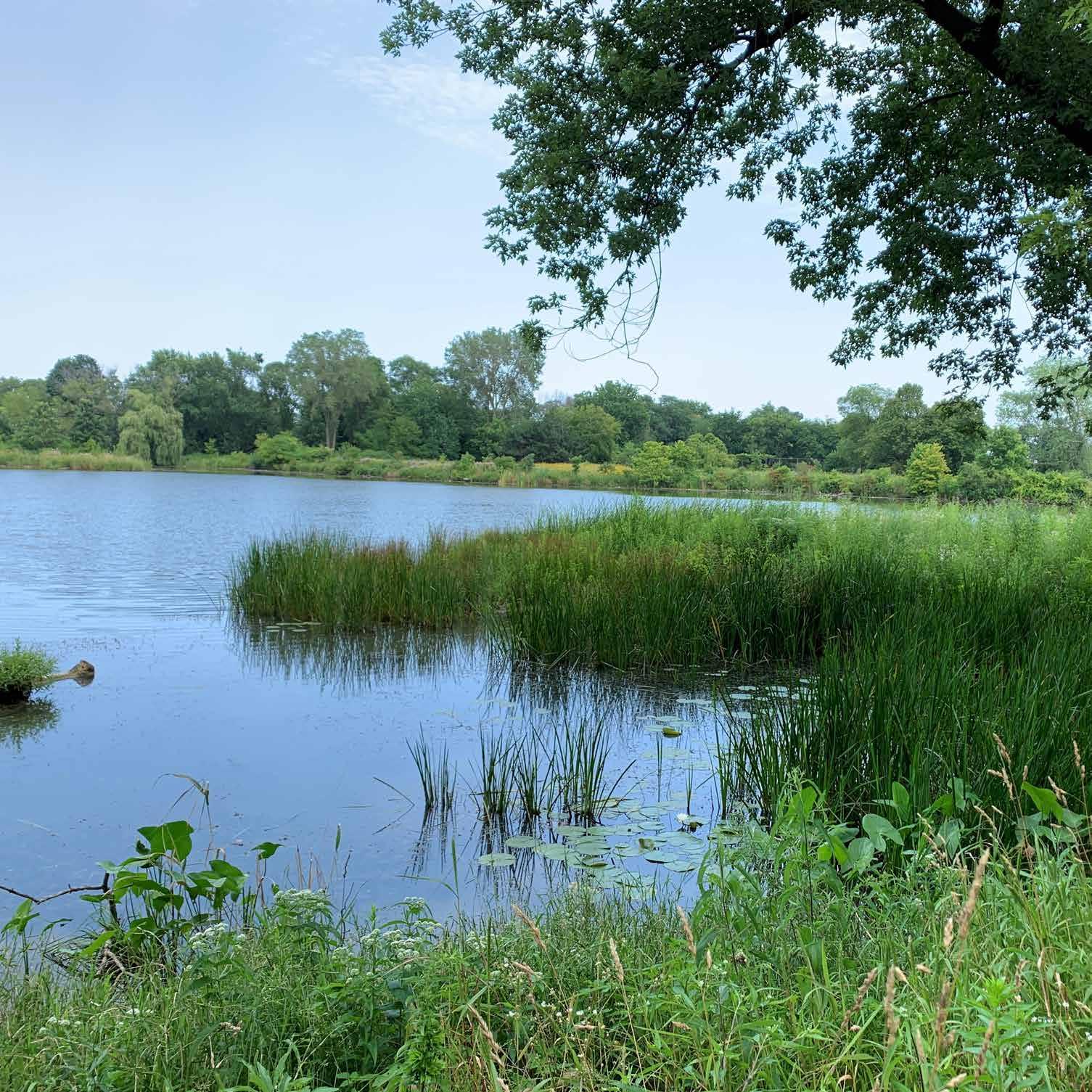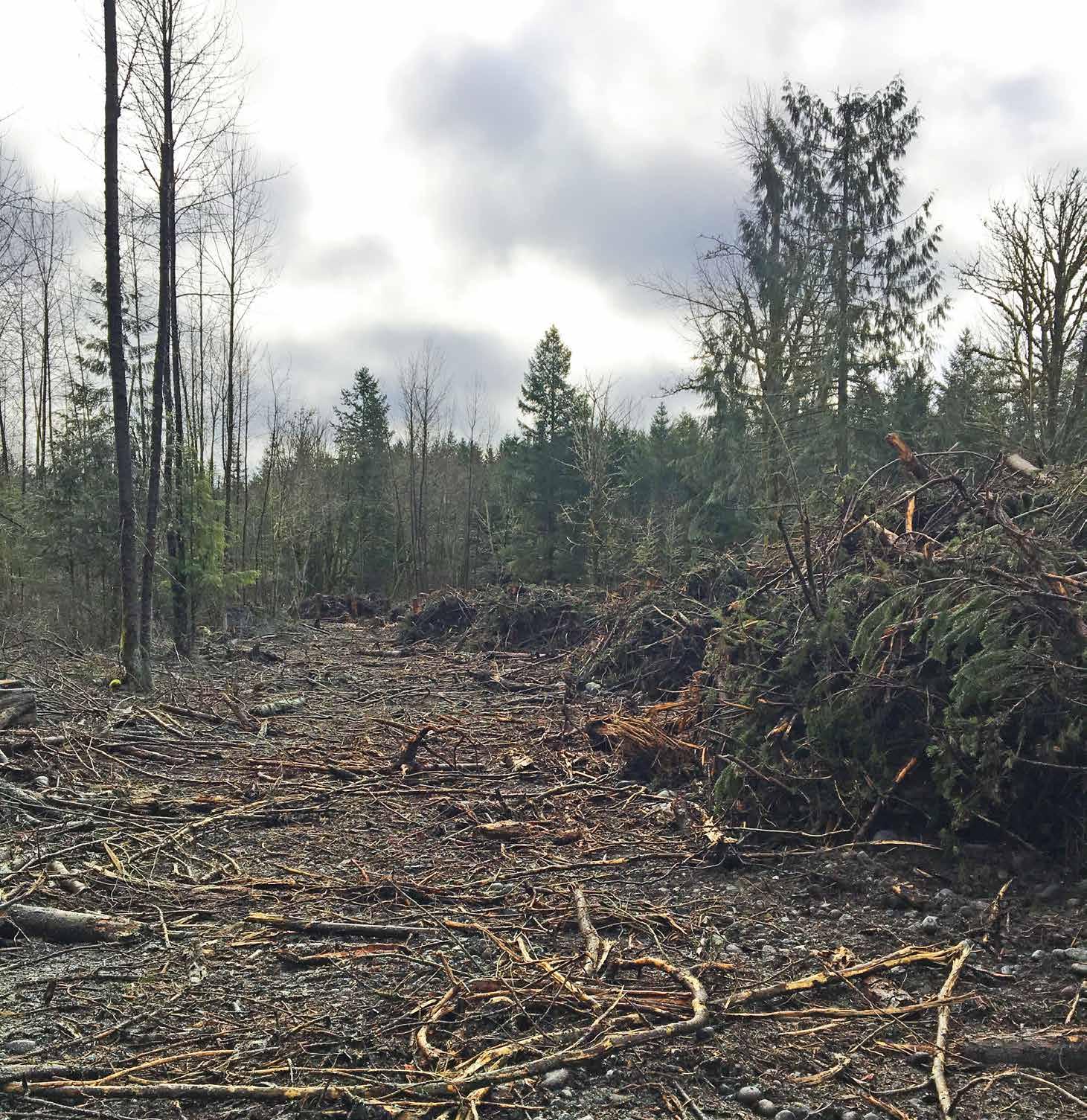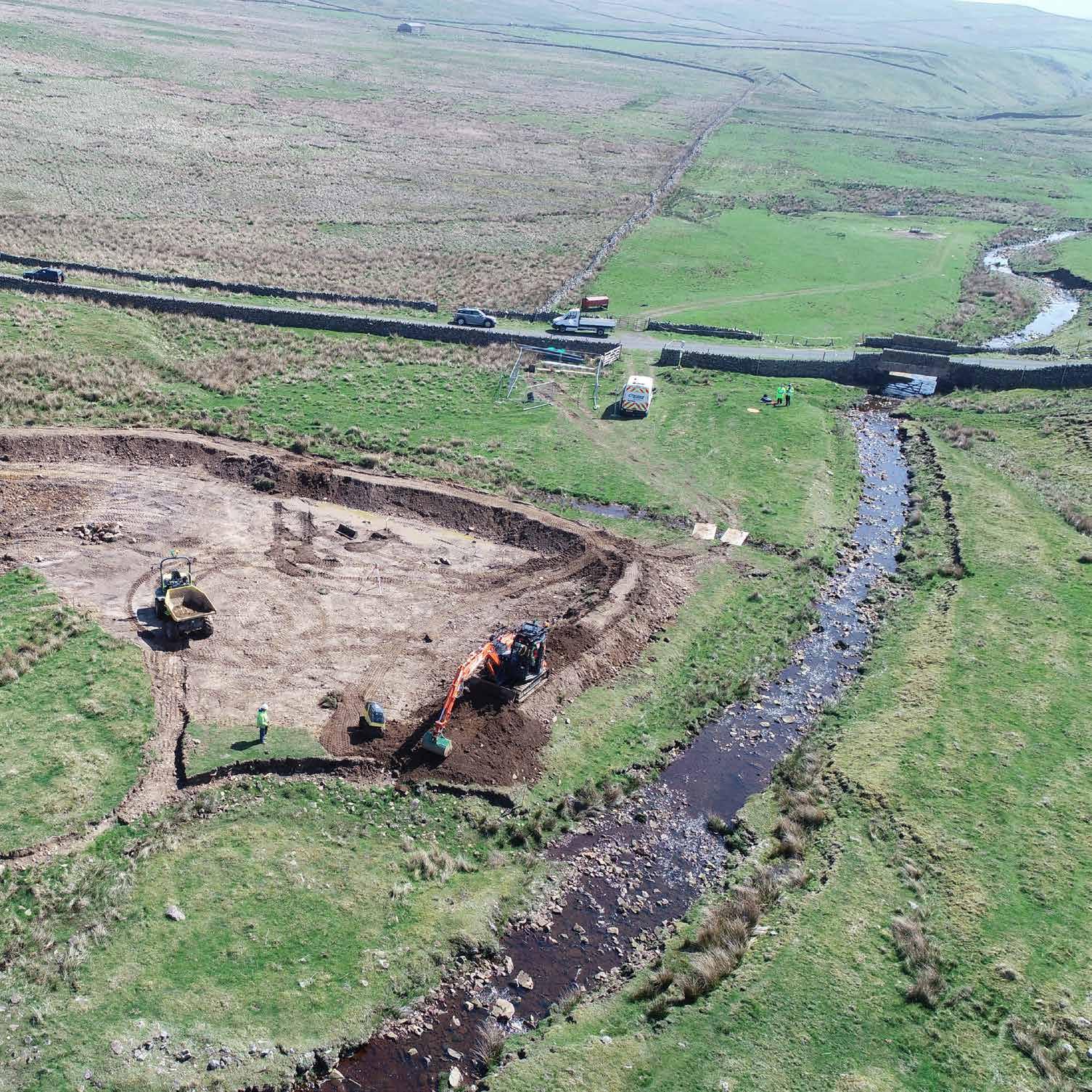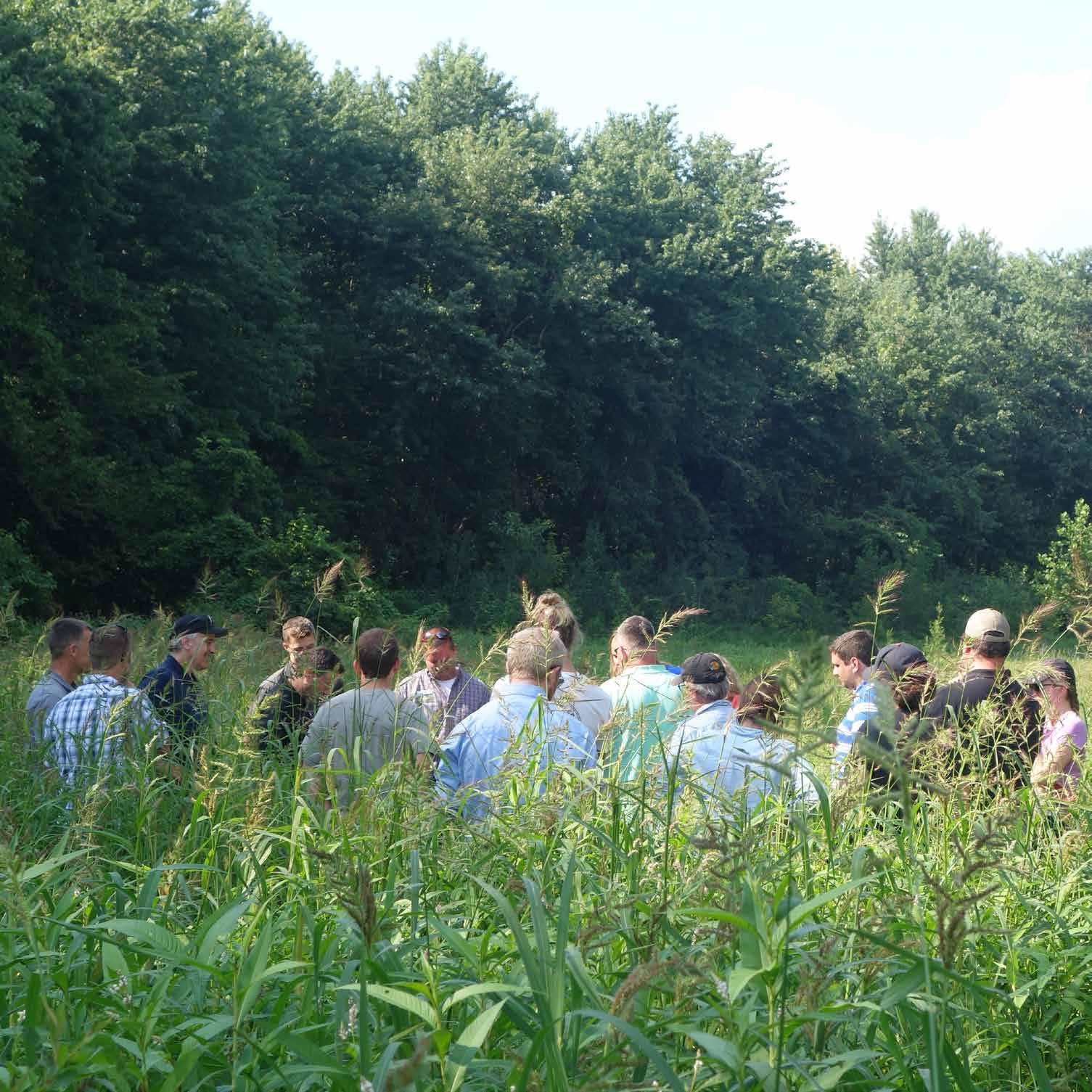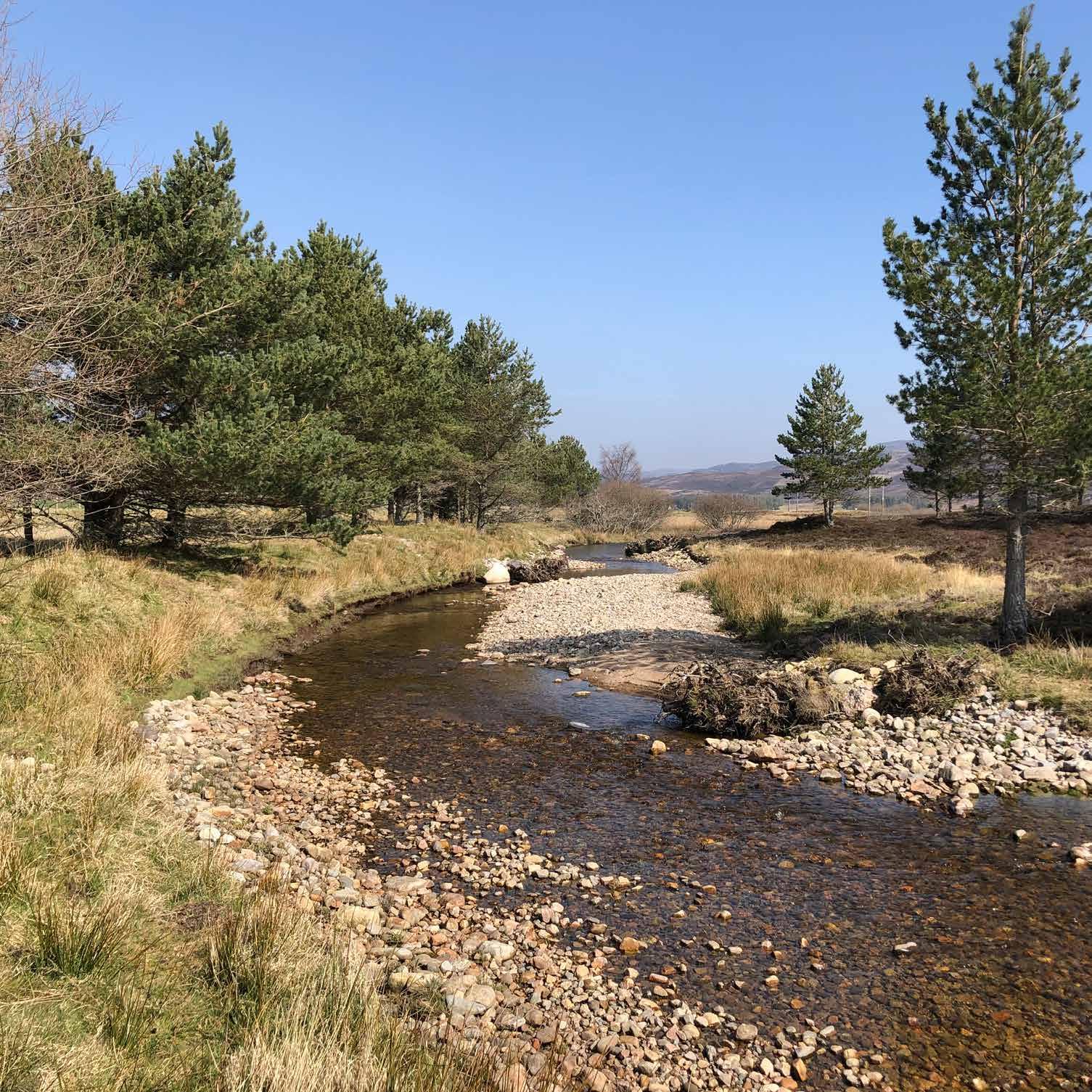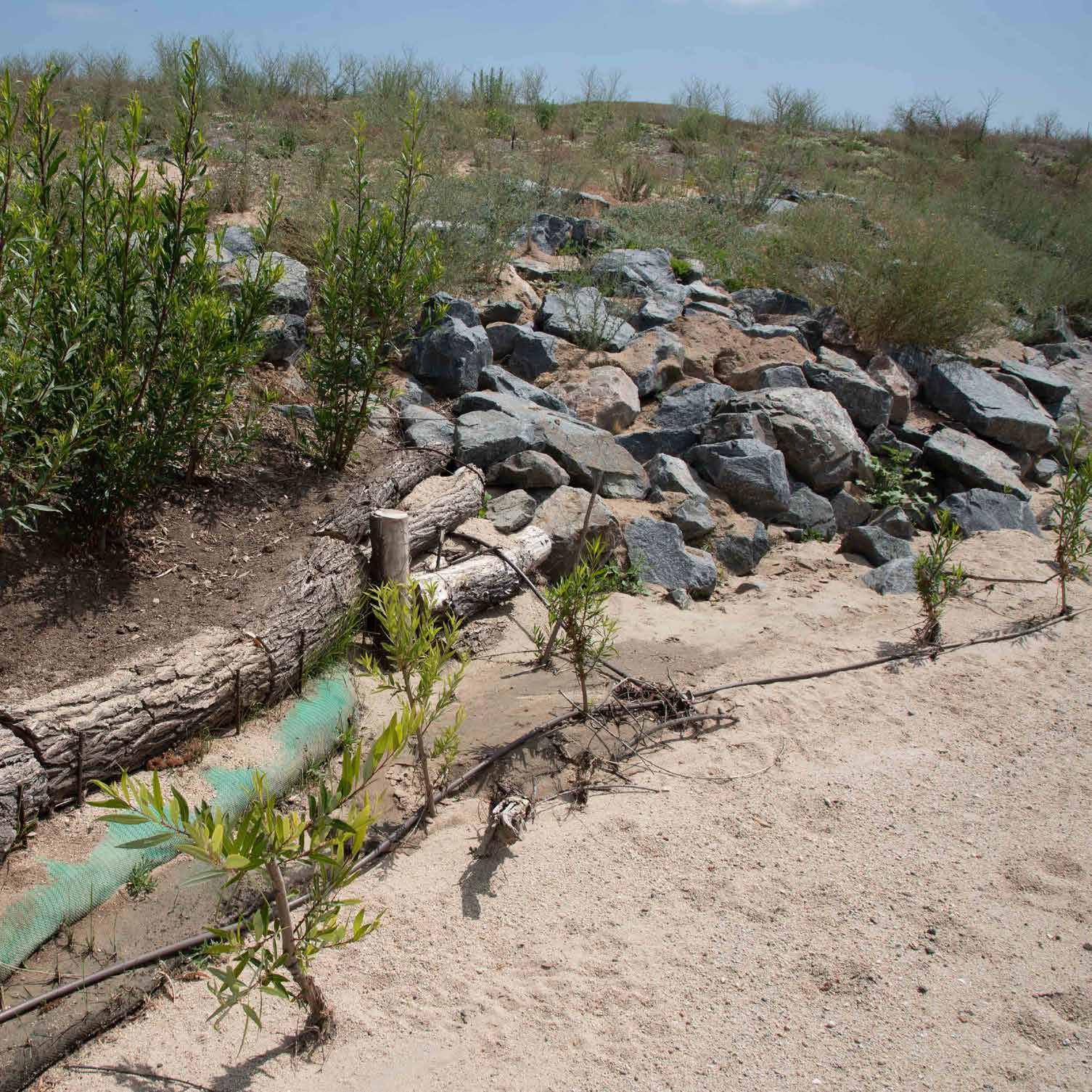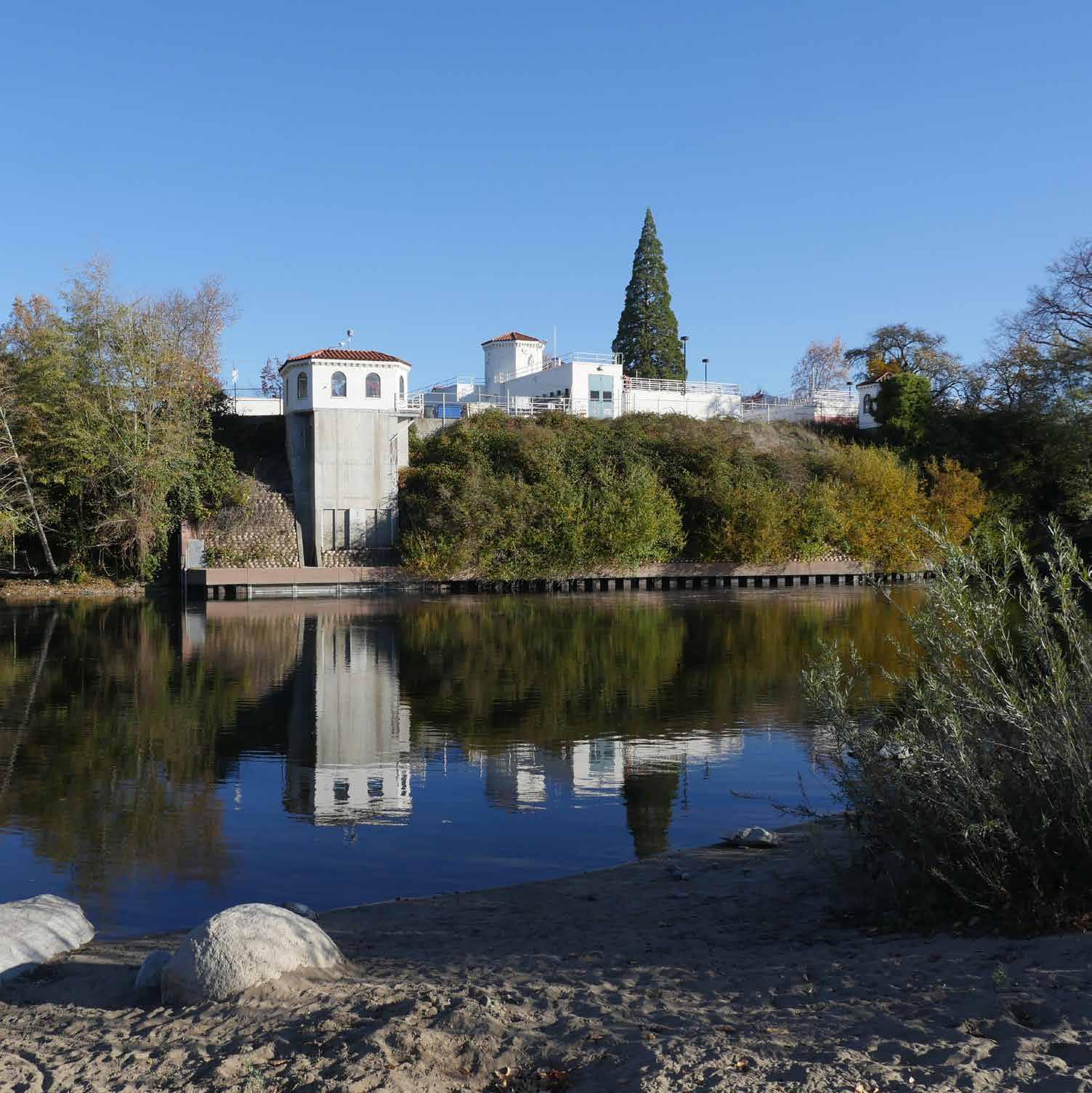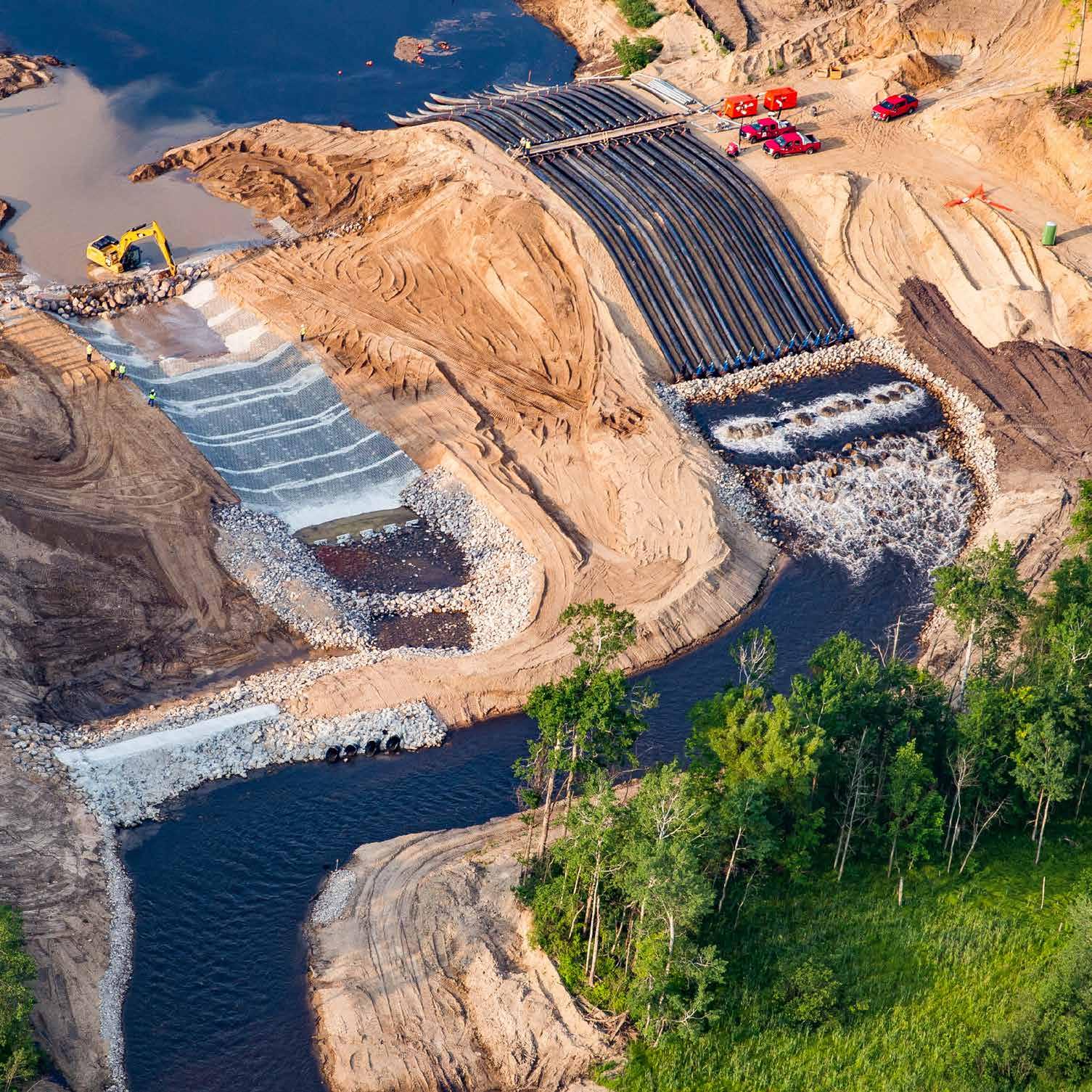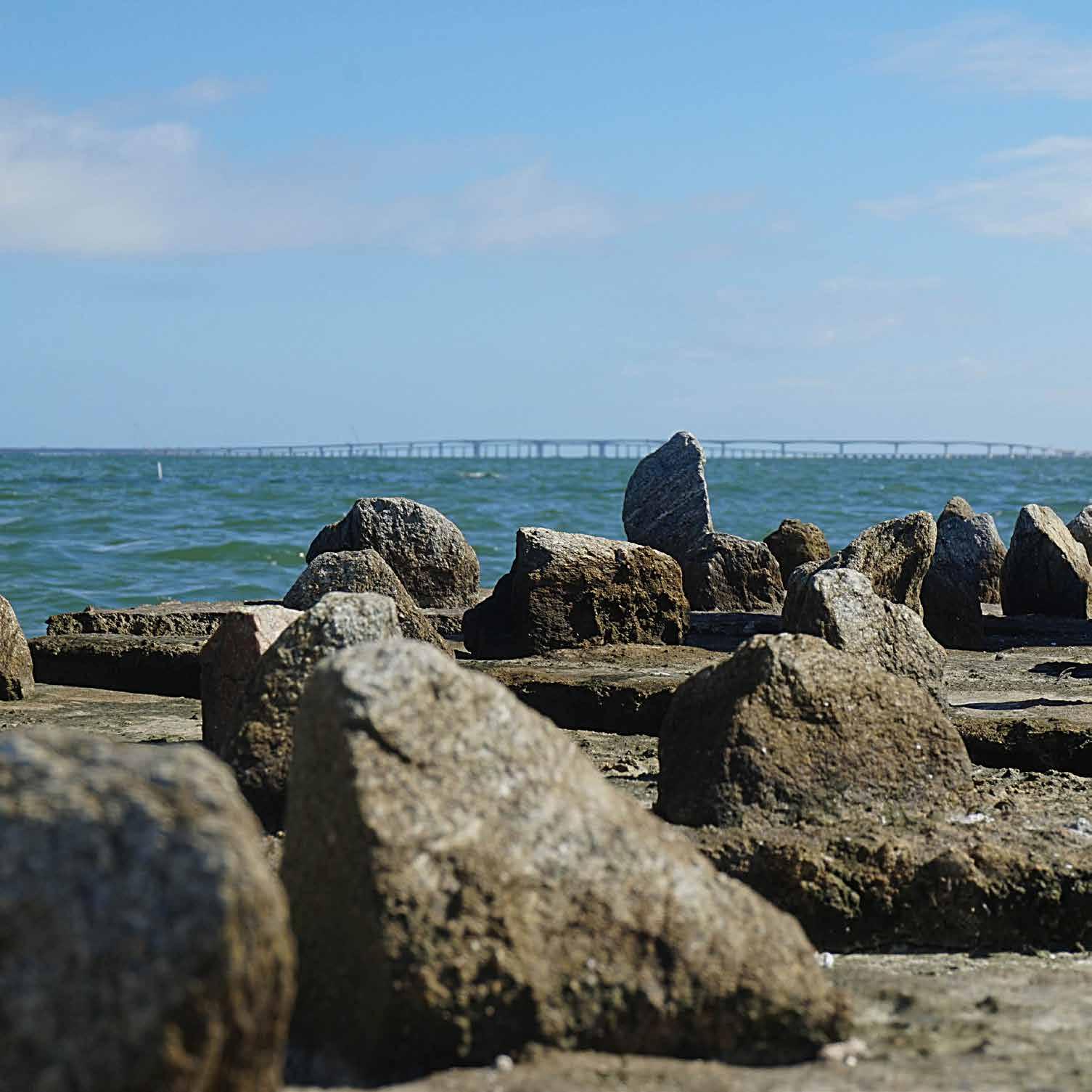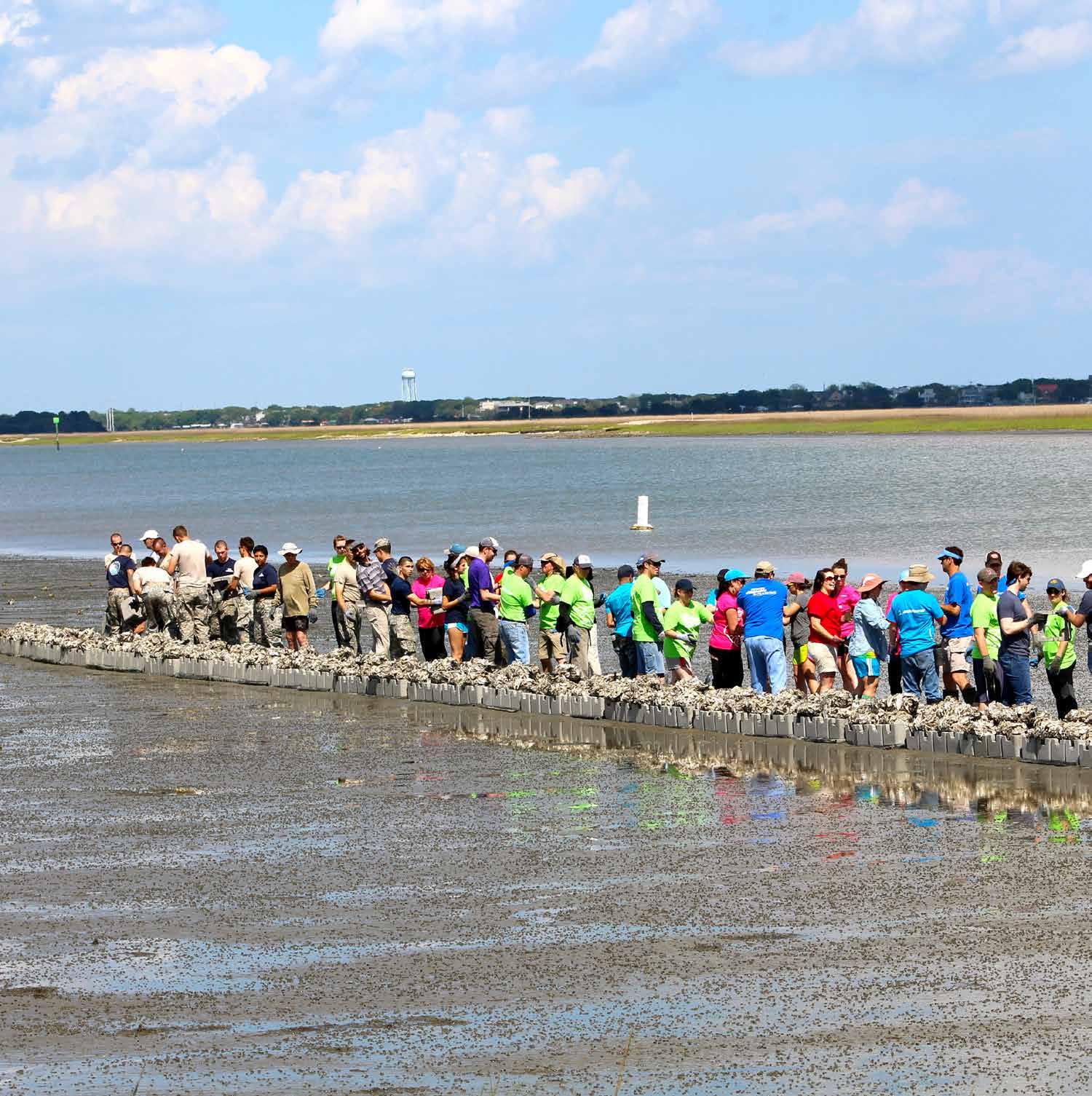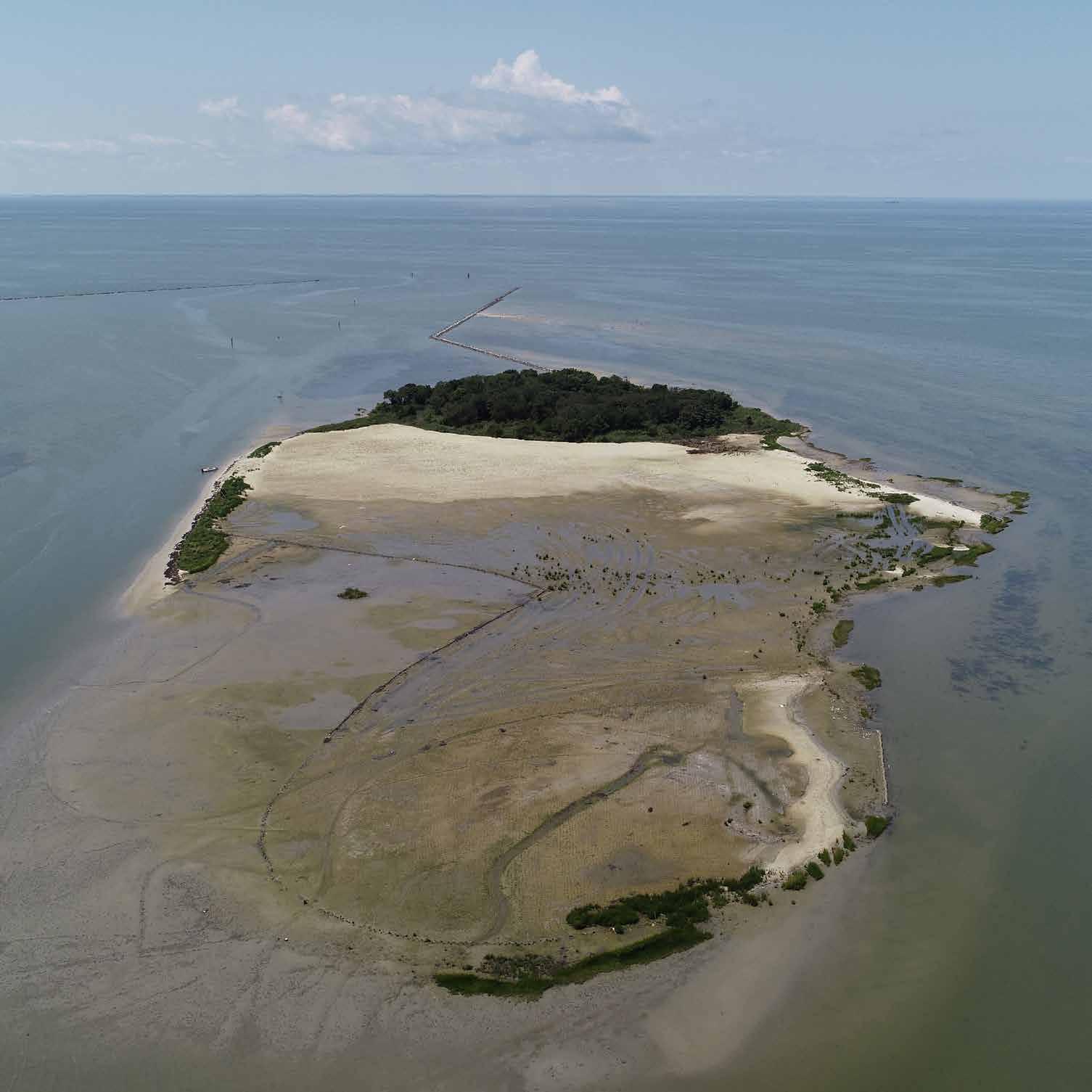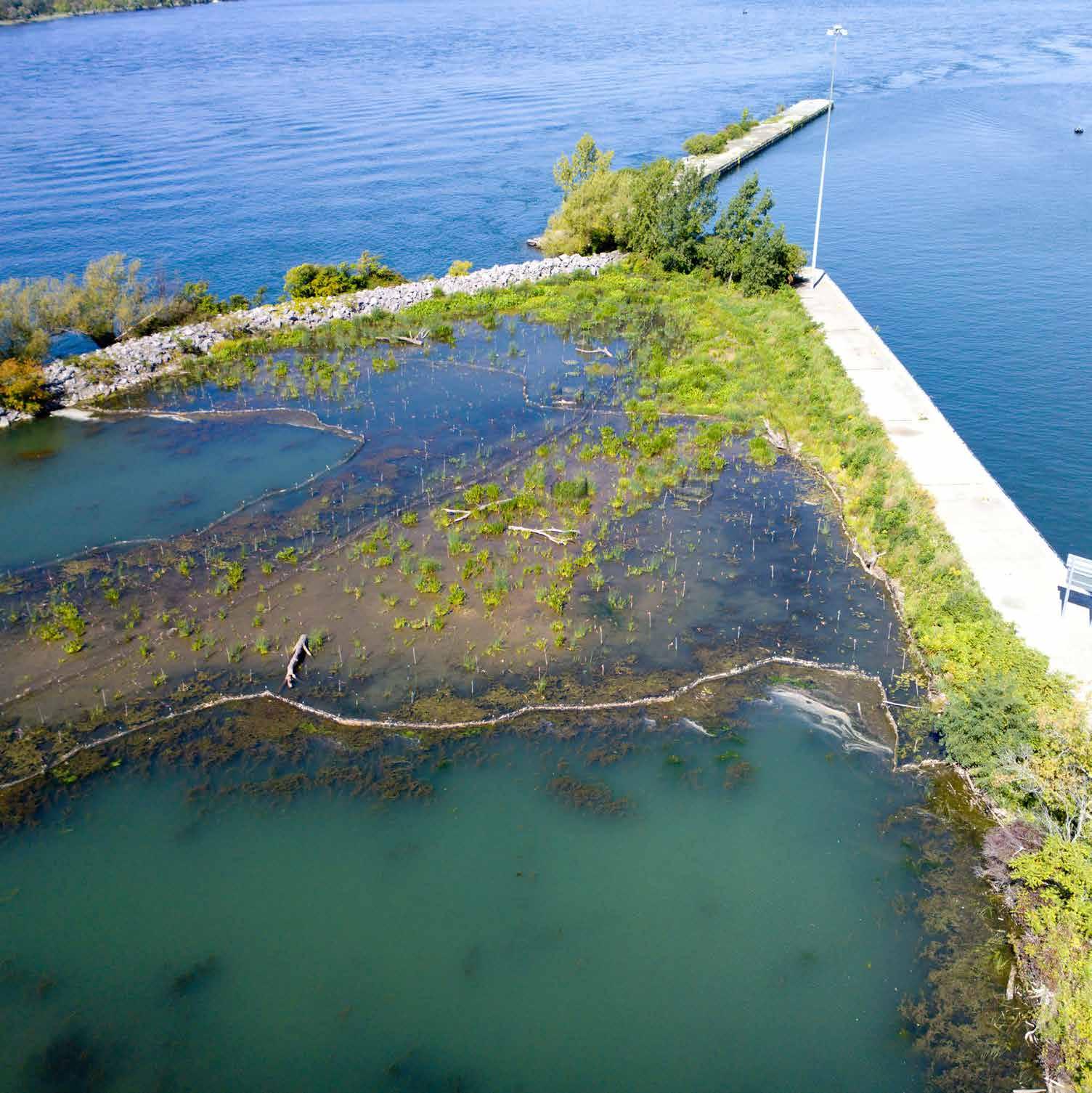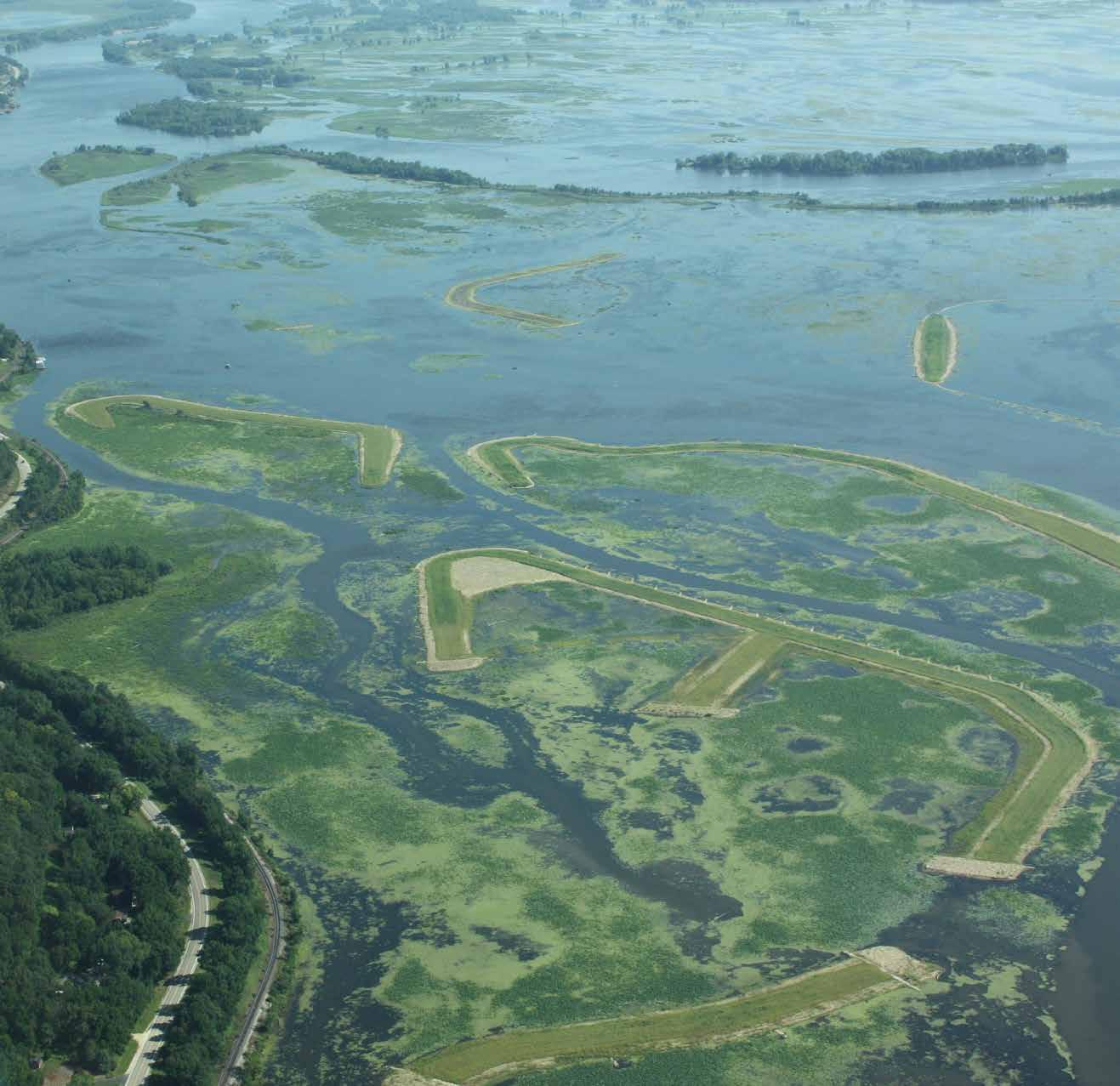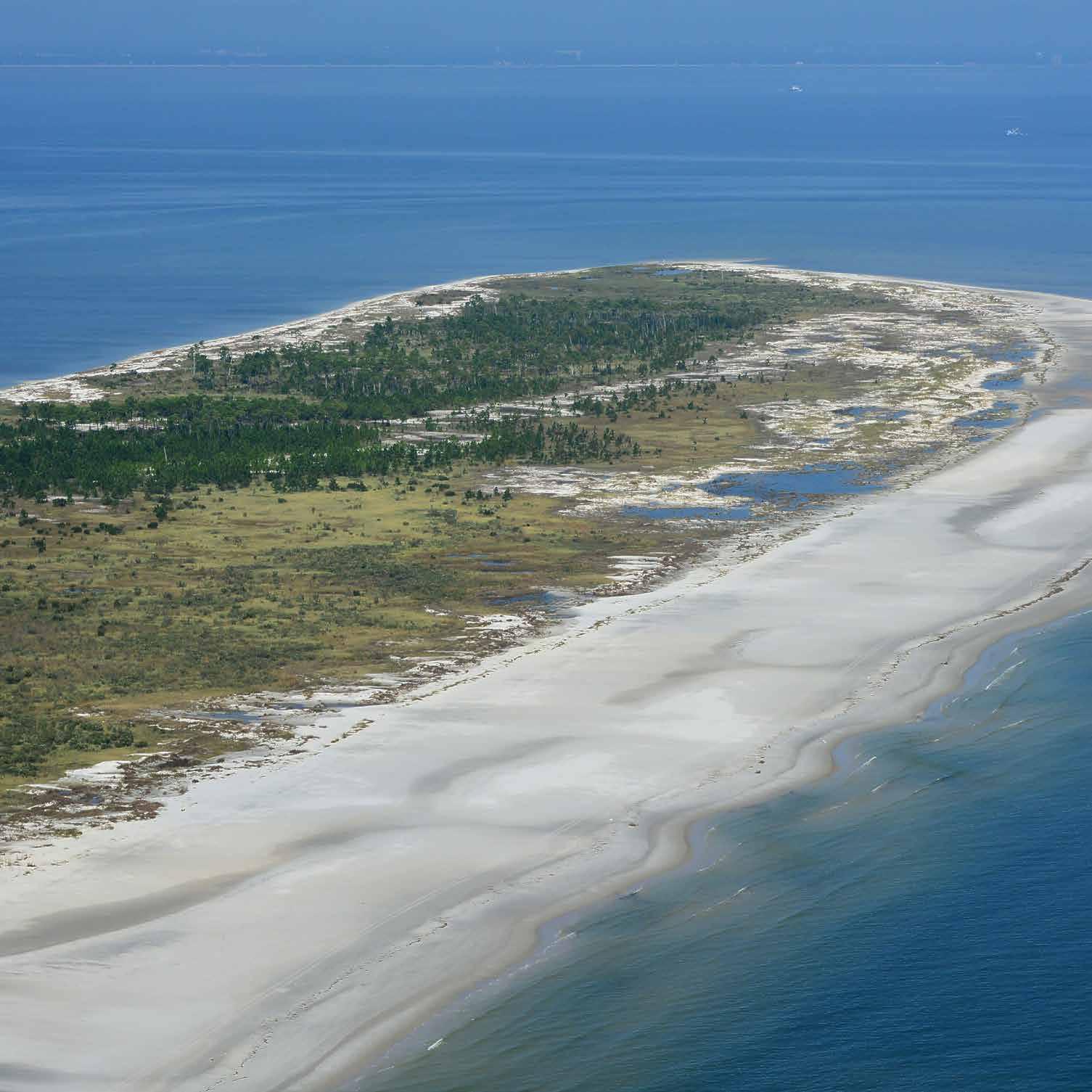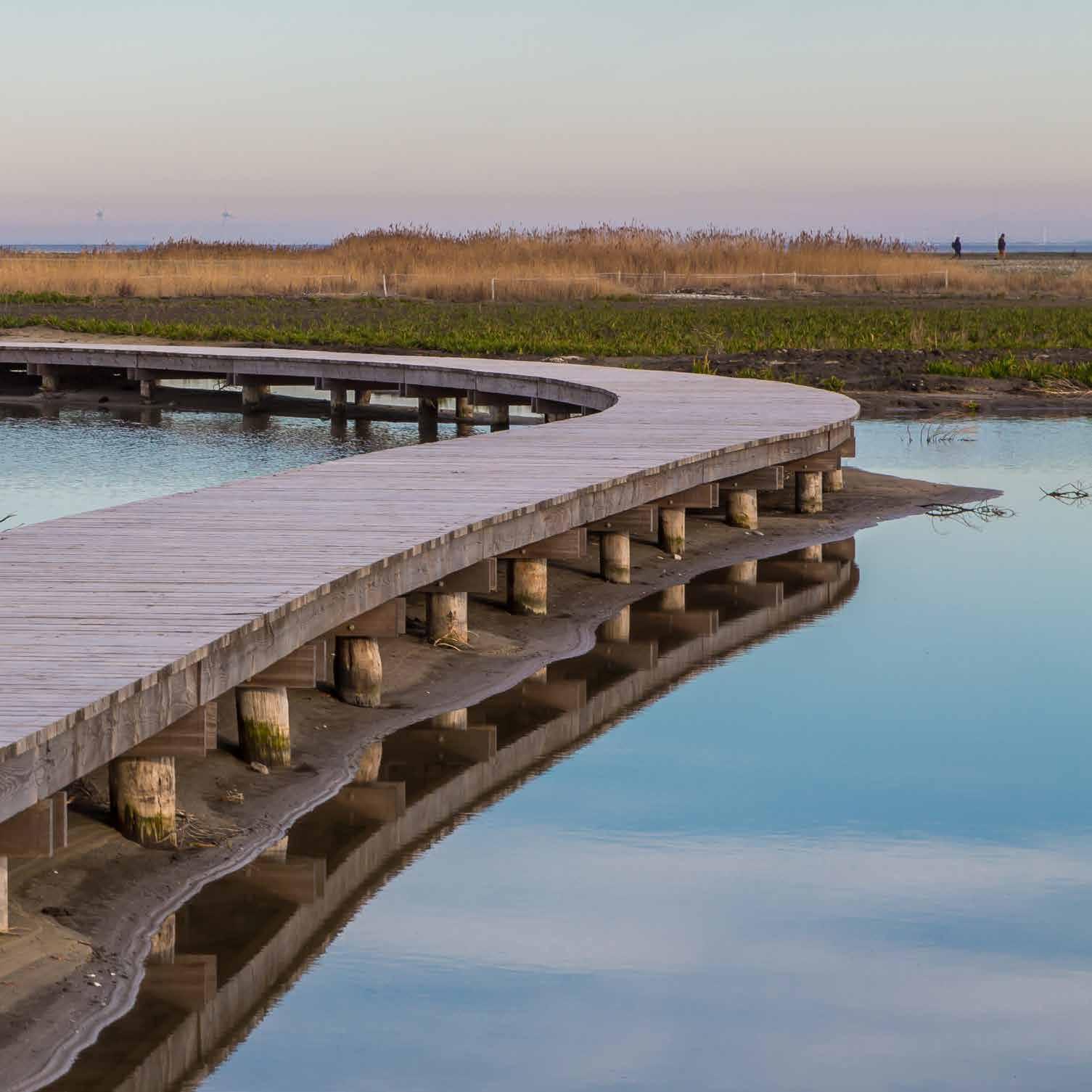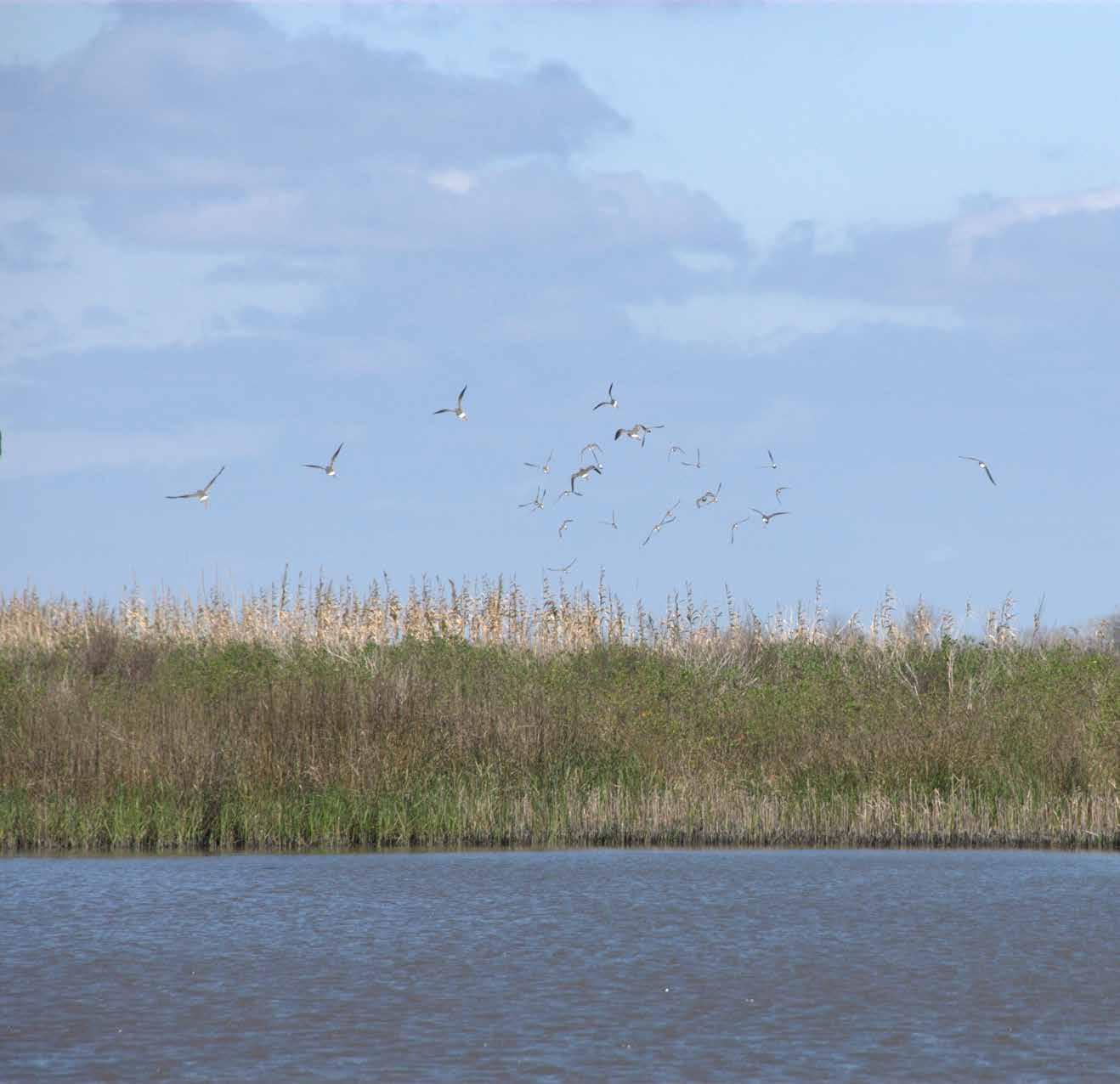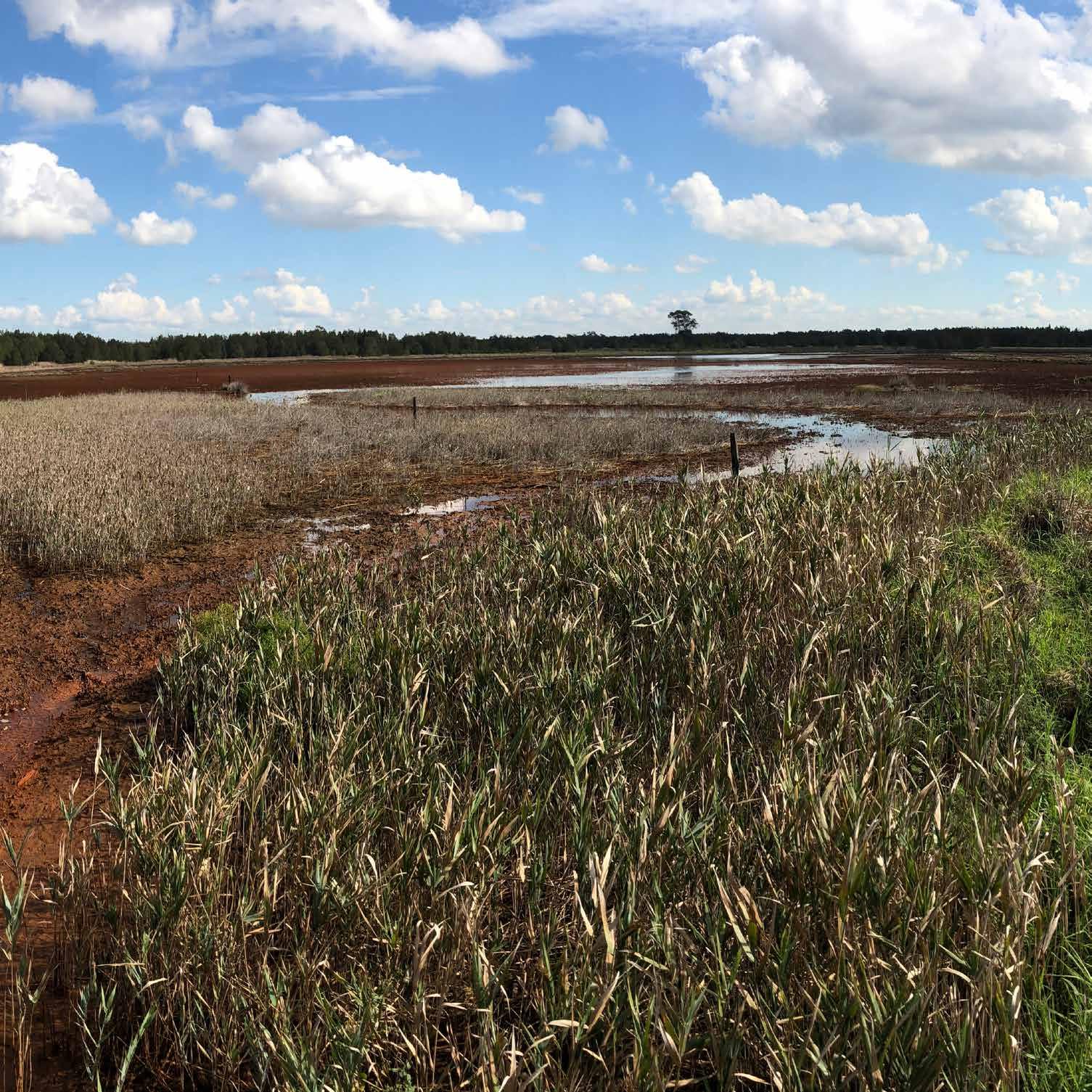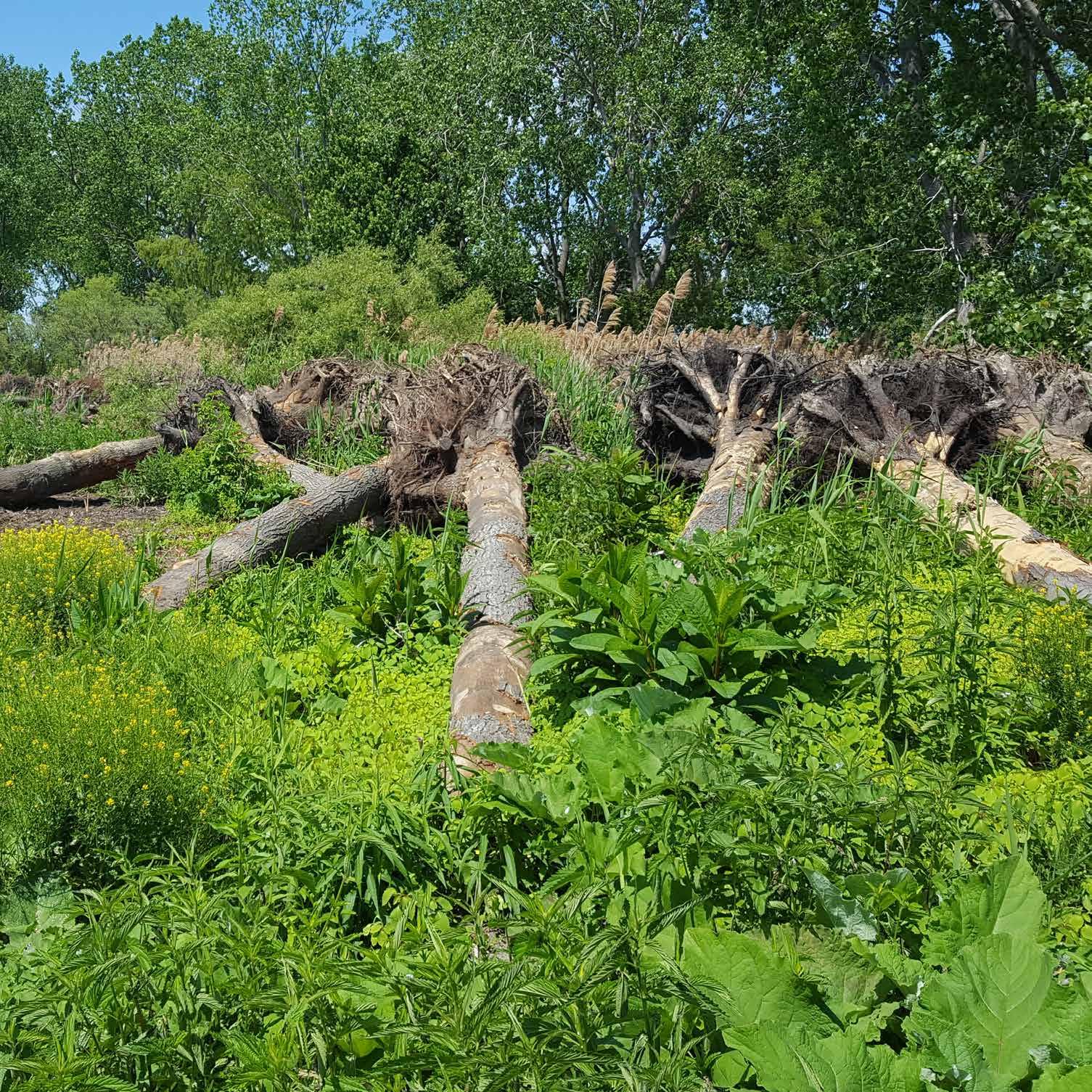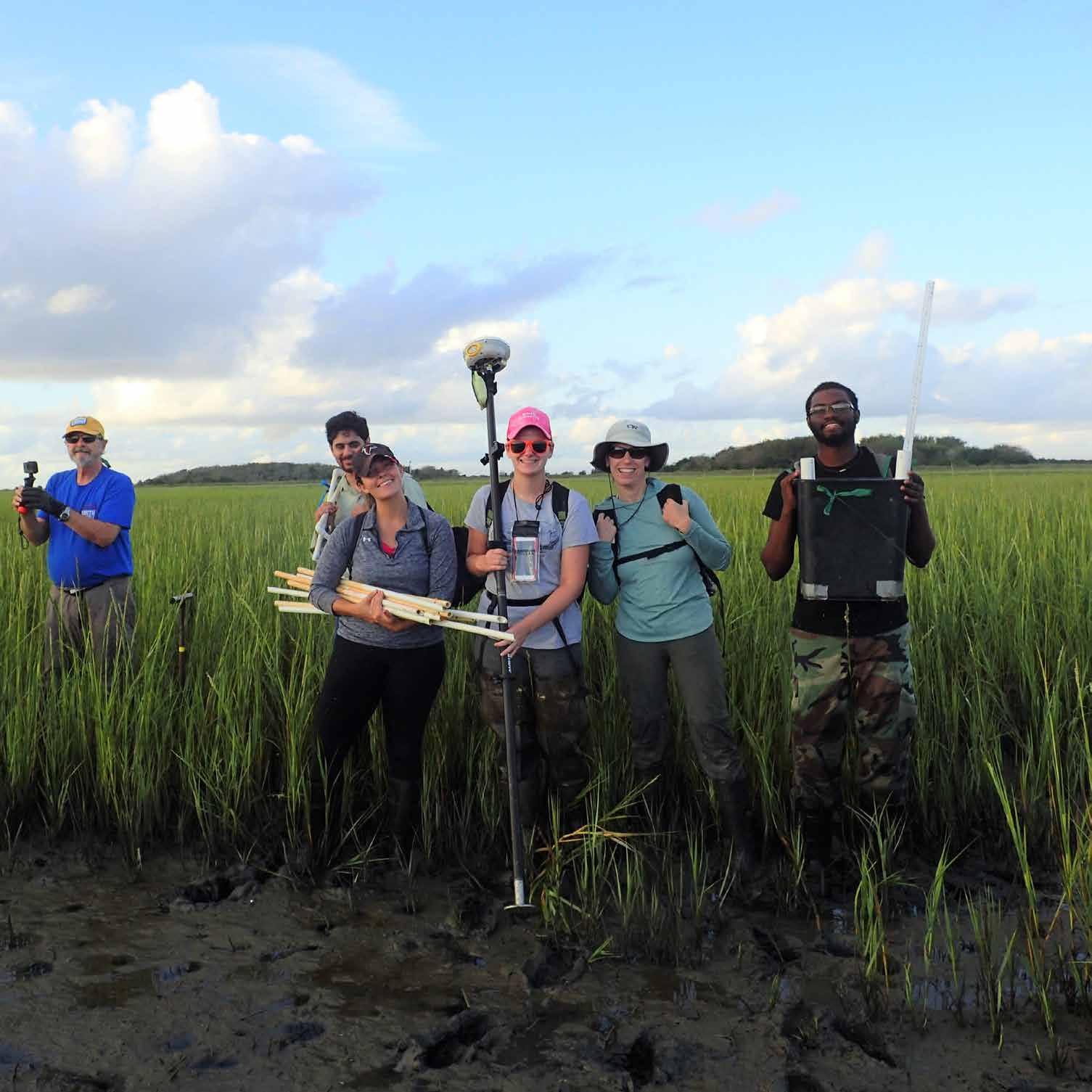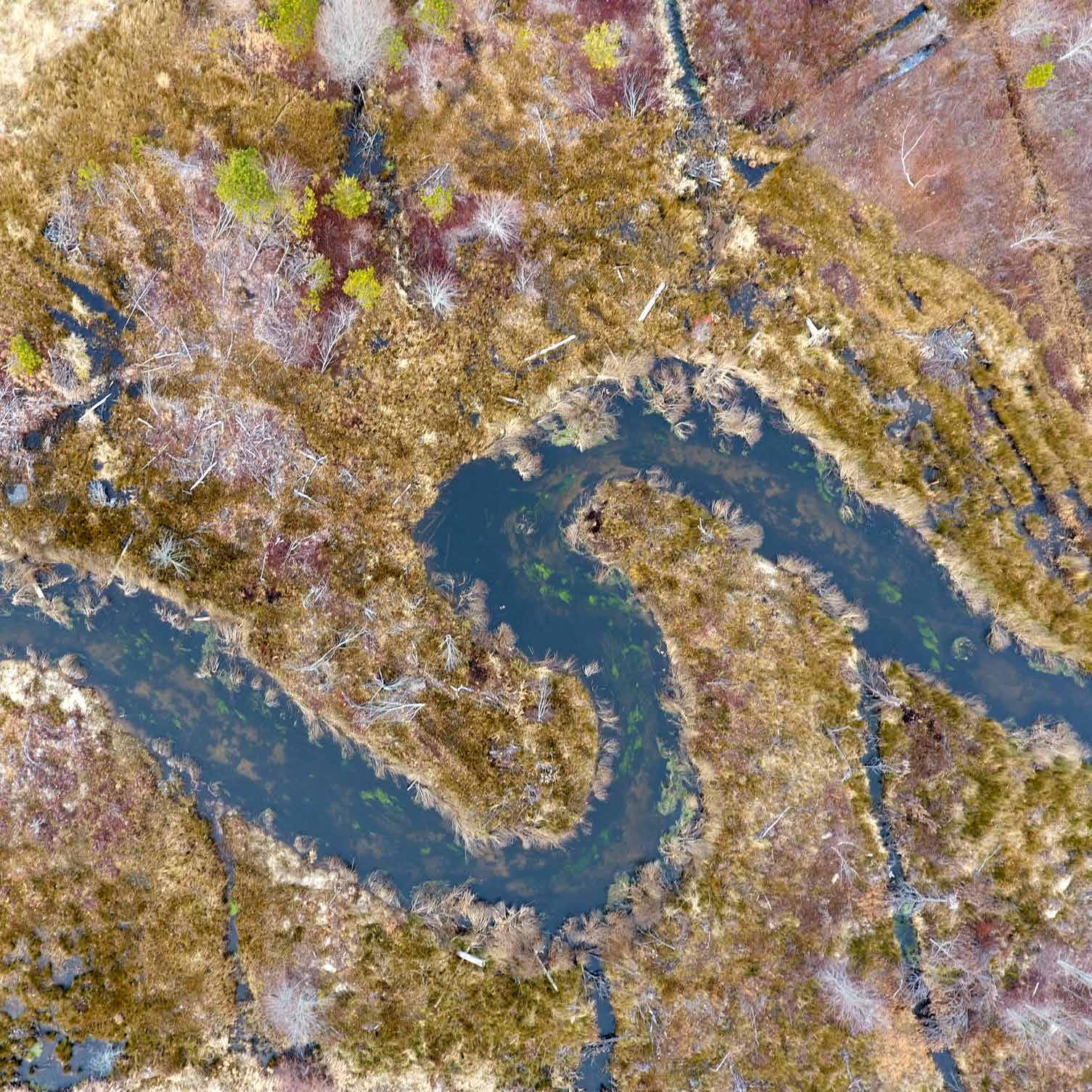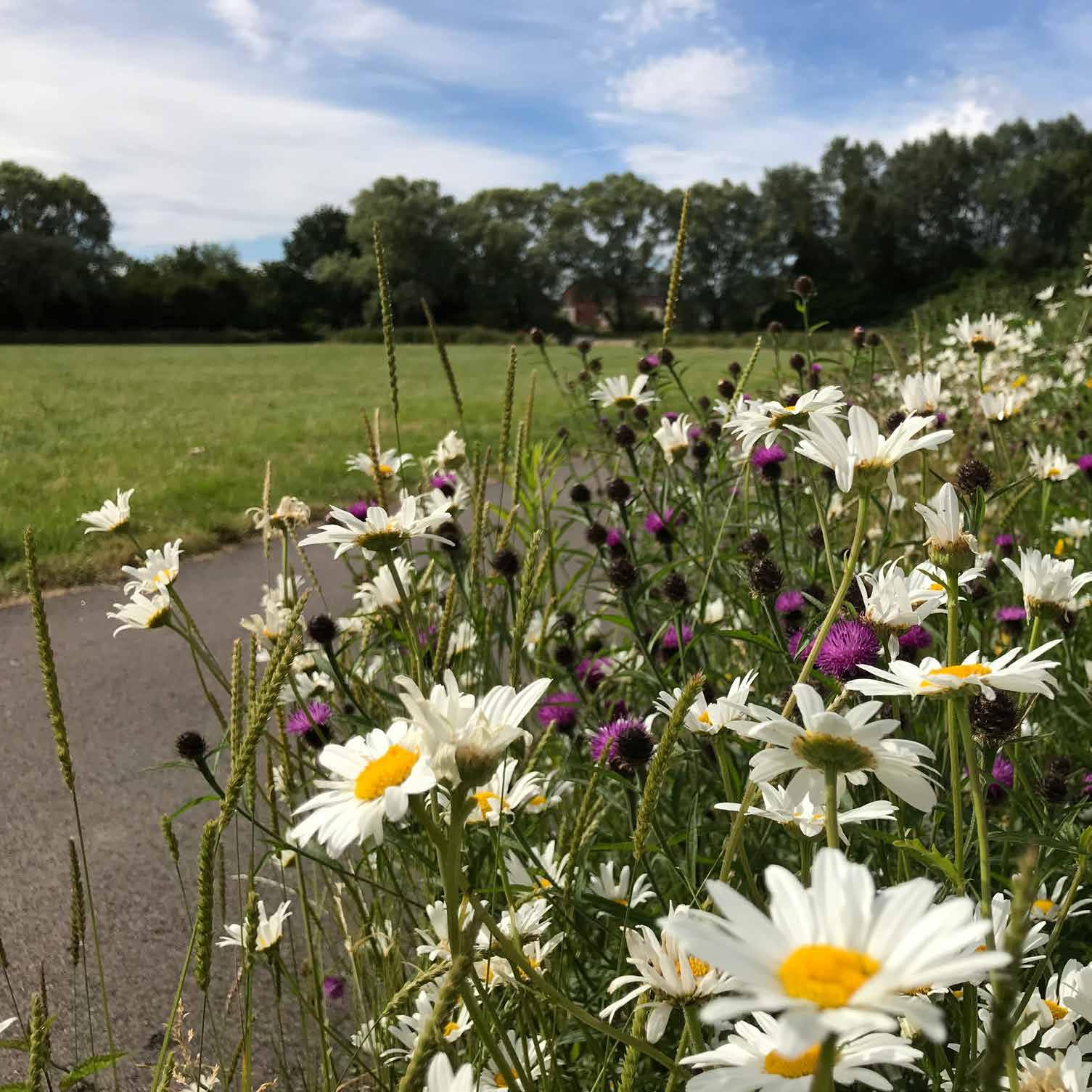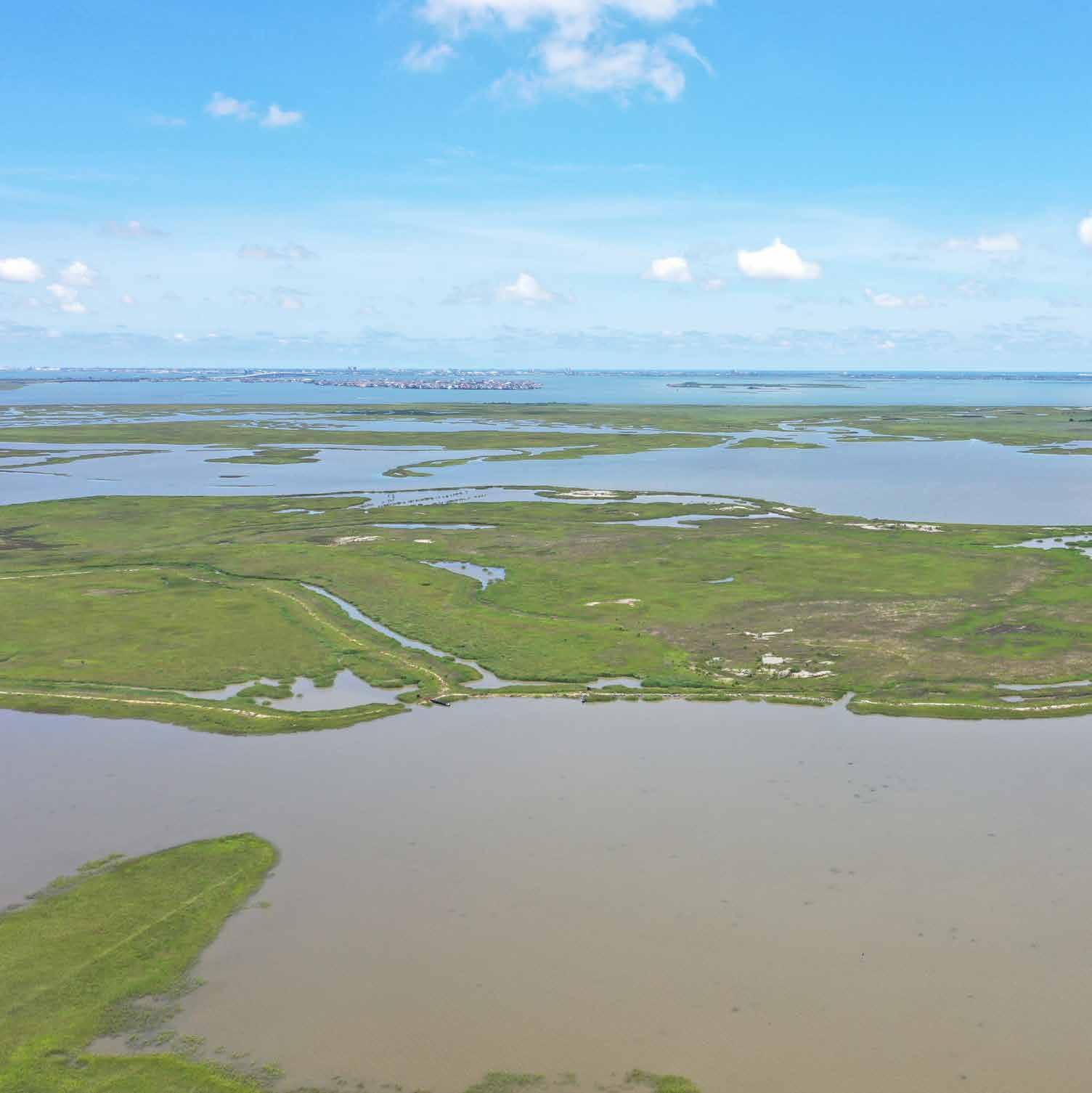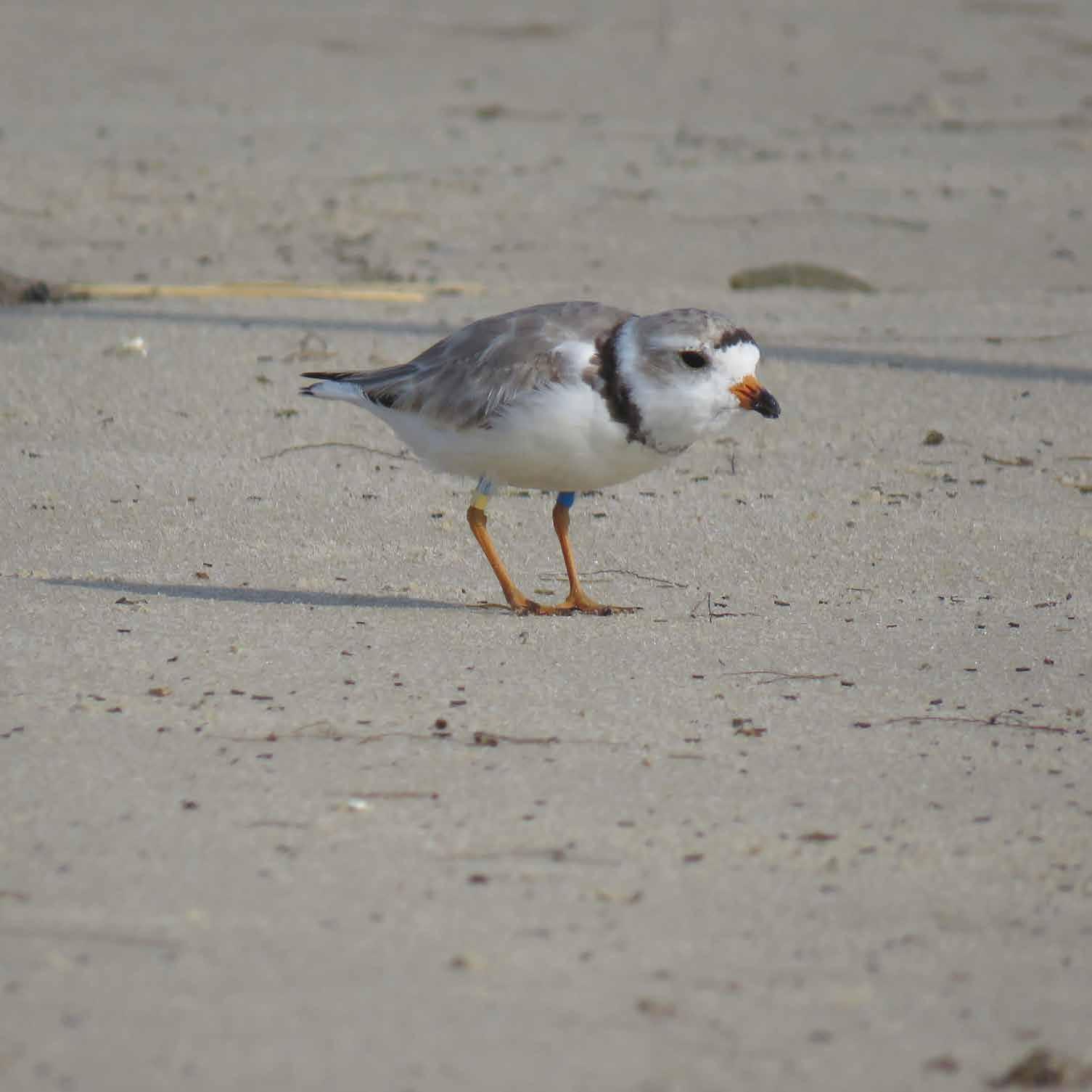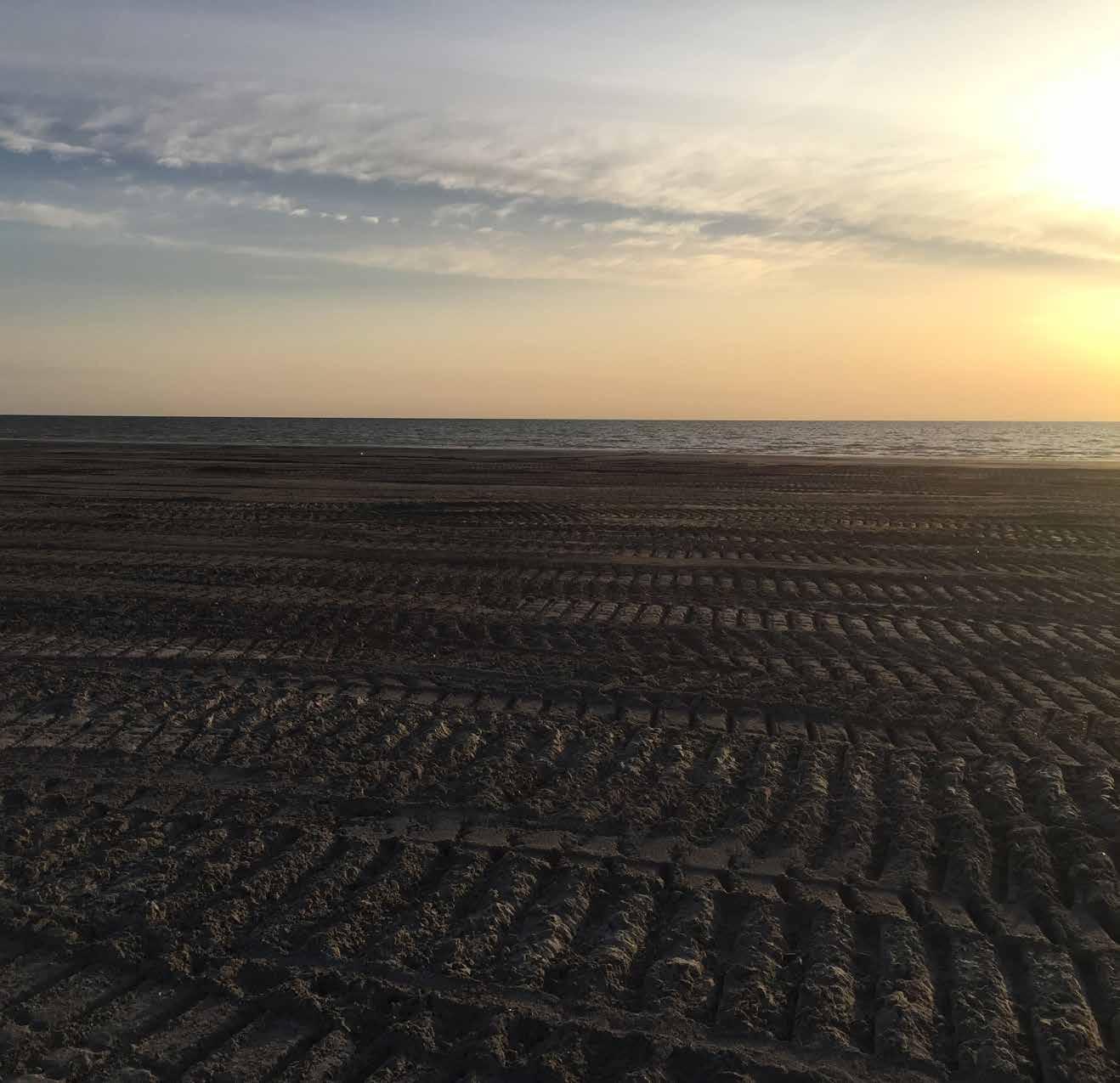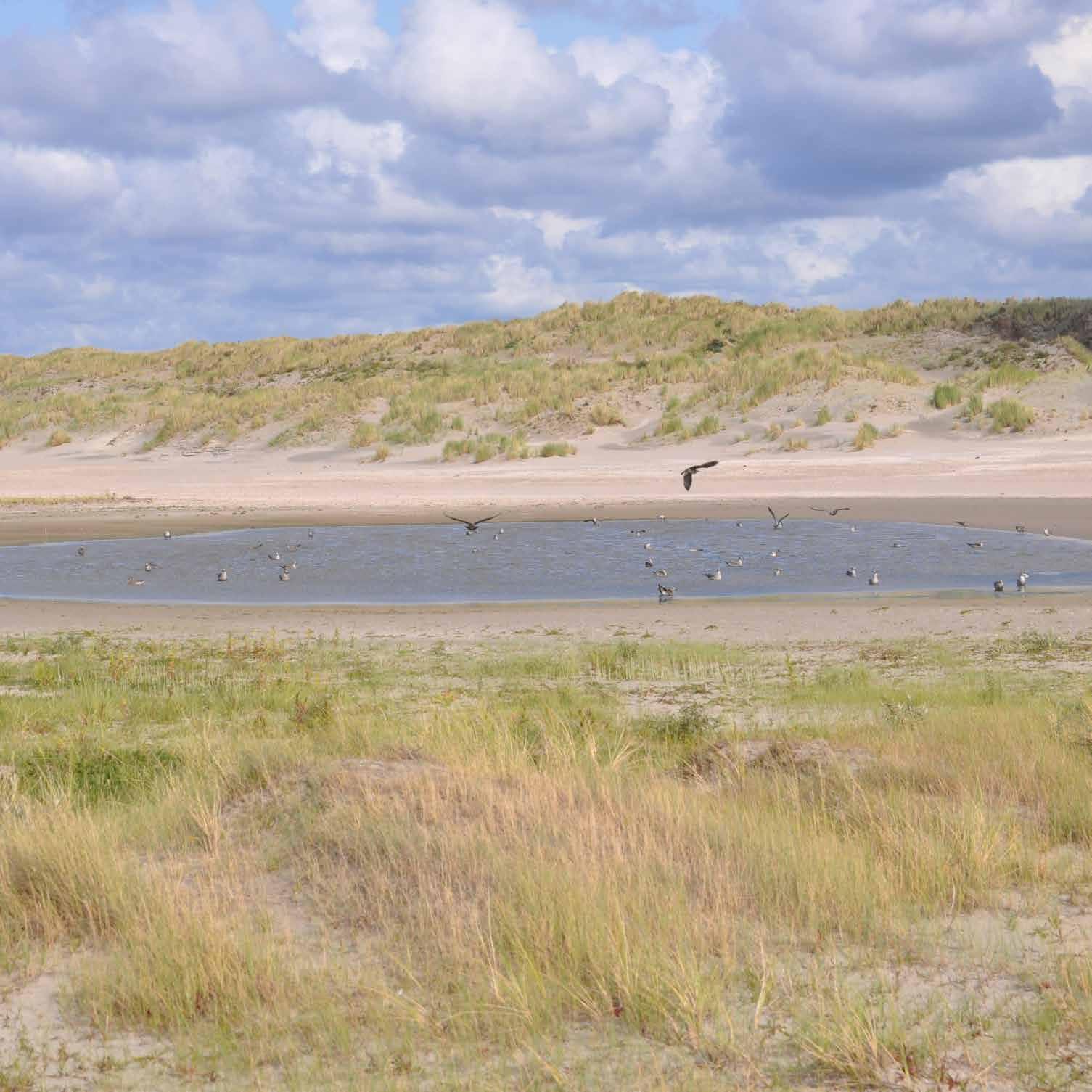Environmental Enhancement of Infrastructure
Clay Ripener Delfzijl, Groningen, the Netherlands
Turning dredged sediment into functional clay. On the edge of the Eems-Dollard Estuary in the Wadden Sea, fields of dredged sediment are serving as a pilot study to explore the viability of converting dredged sediment into clay soil. The project lies in a muddy system of tidal flats at the mouth of the Ems River at the border between the Netherlands and Germany, where excess sediment has negatively affected water quality and biodiversity, accumulating in ports and requiring regular dredging. Since 2018, EcoShape, together with the partners of the Eems-Dollard 2050 Program, have tested a variety of methods of dewatering, desalinating, and oxidizing the sediment to convert it into a useful resource—clay soil for reinforcing dikes and raising farmlands. In 2022, if the ripened clay proves to be suitable, 70,000 cubic meters of the new clay soil will be used in a pilot to strengthen a 1-kilometer stretch of the Broad Green Dike. If this pilot is successful as well, the remaining clay soil will be used to strengthen the entire 11.5-kilometer-long Broad Green Dike. This project is part of the larger system-based program Eems-Dollard 2050, which comprises various pilots in the region to develop the natural and economic status of the Eems area.
264














